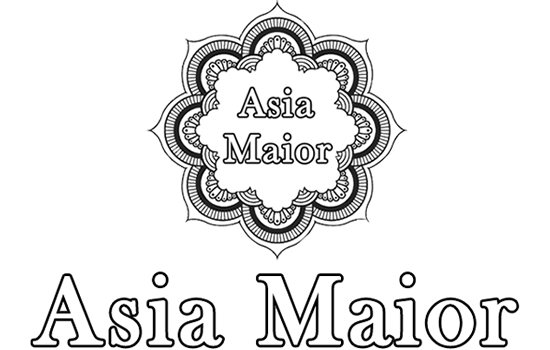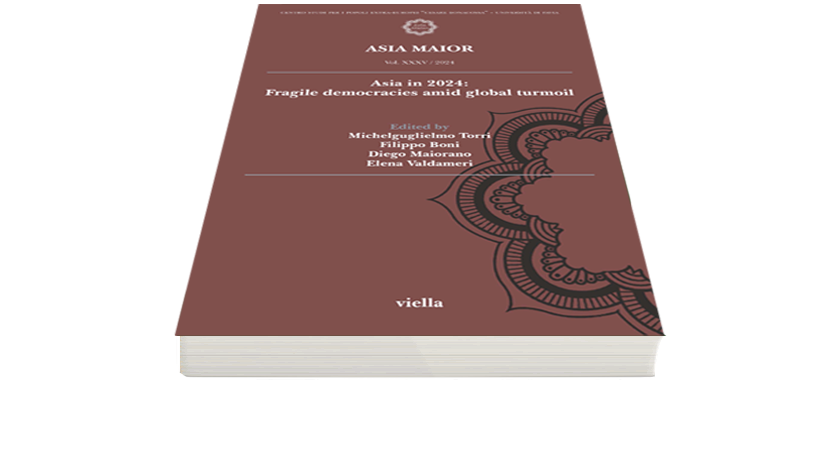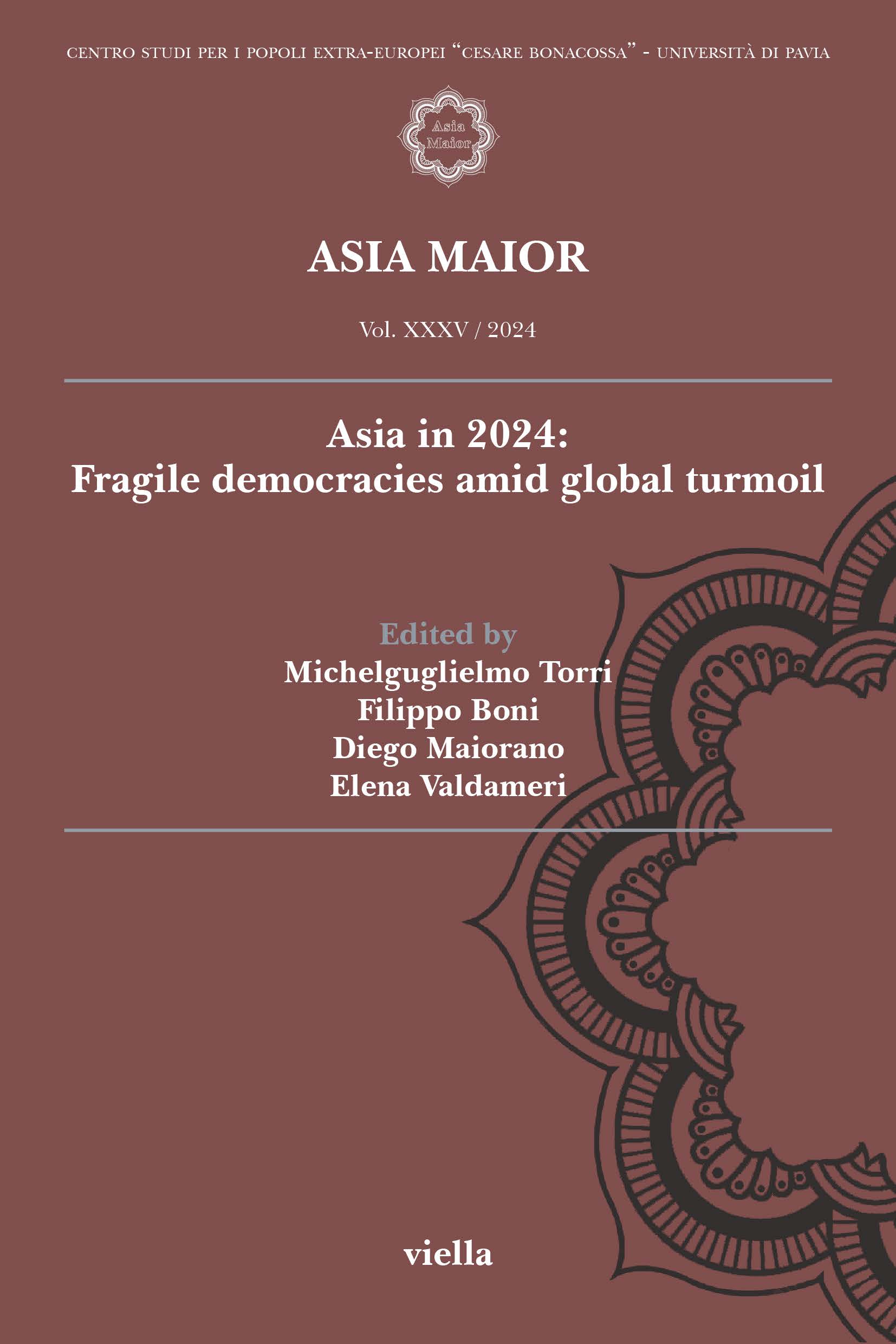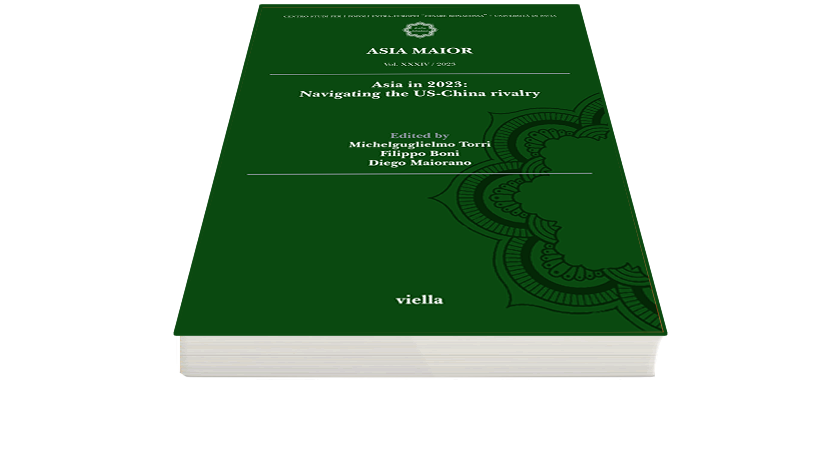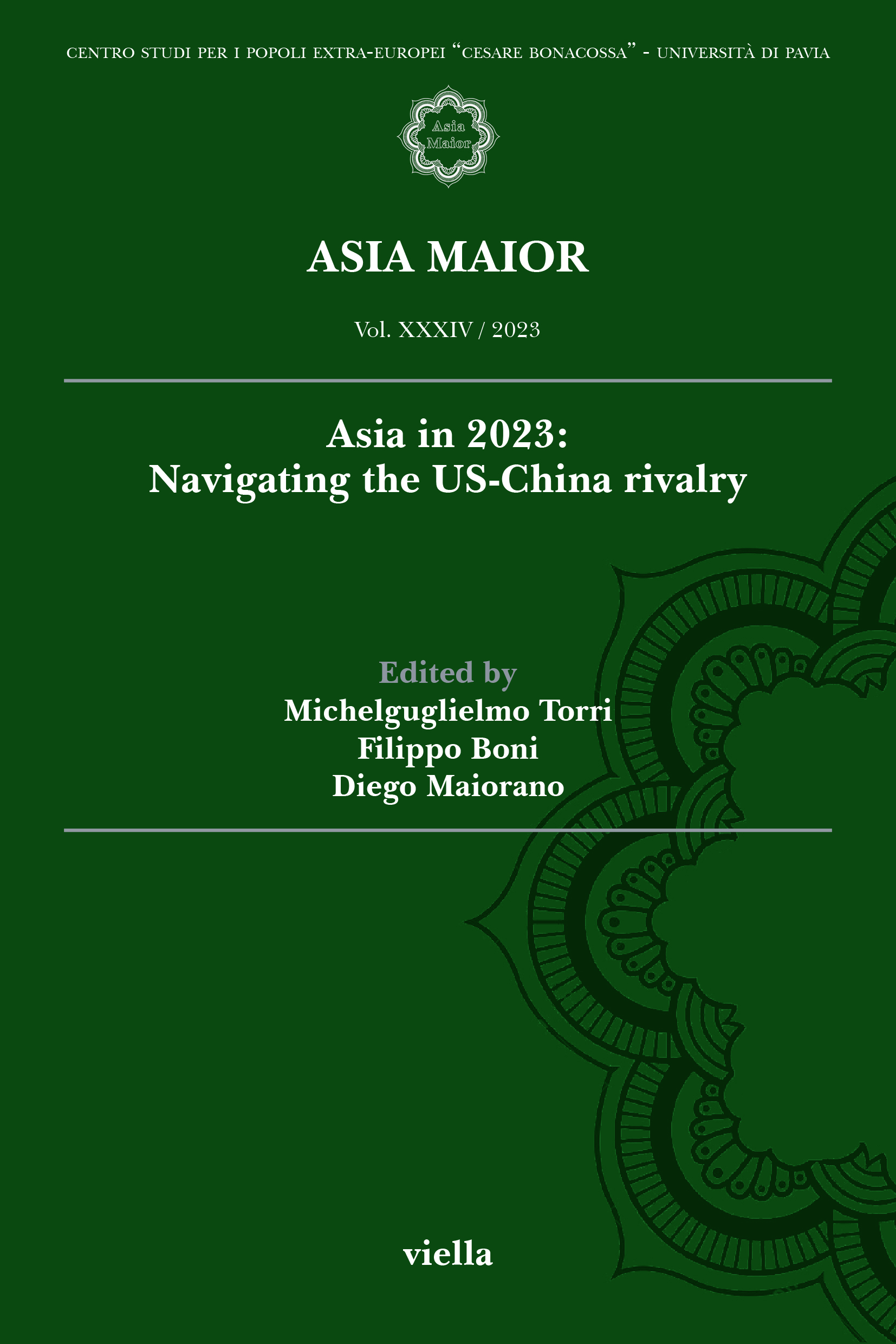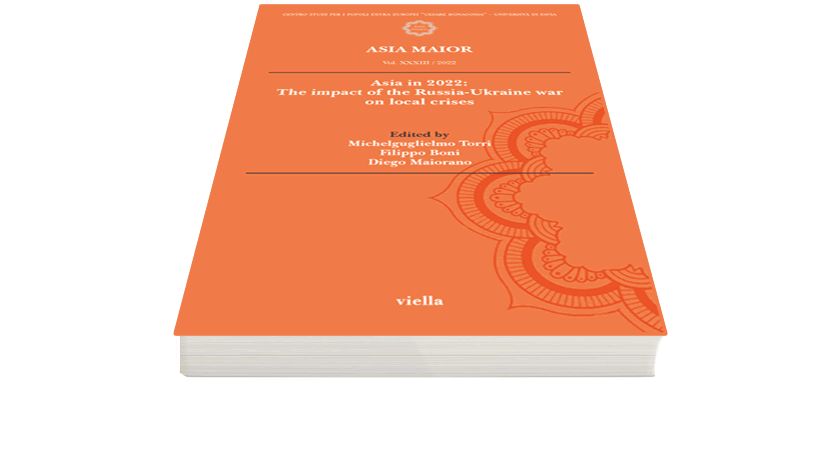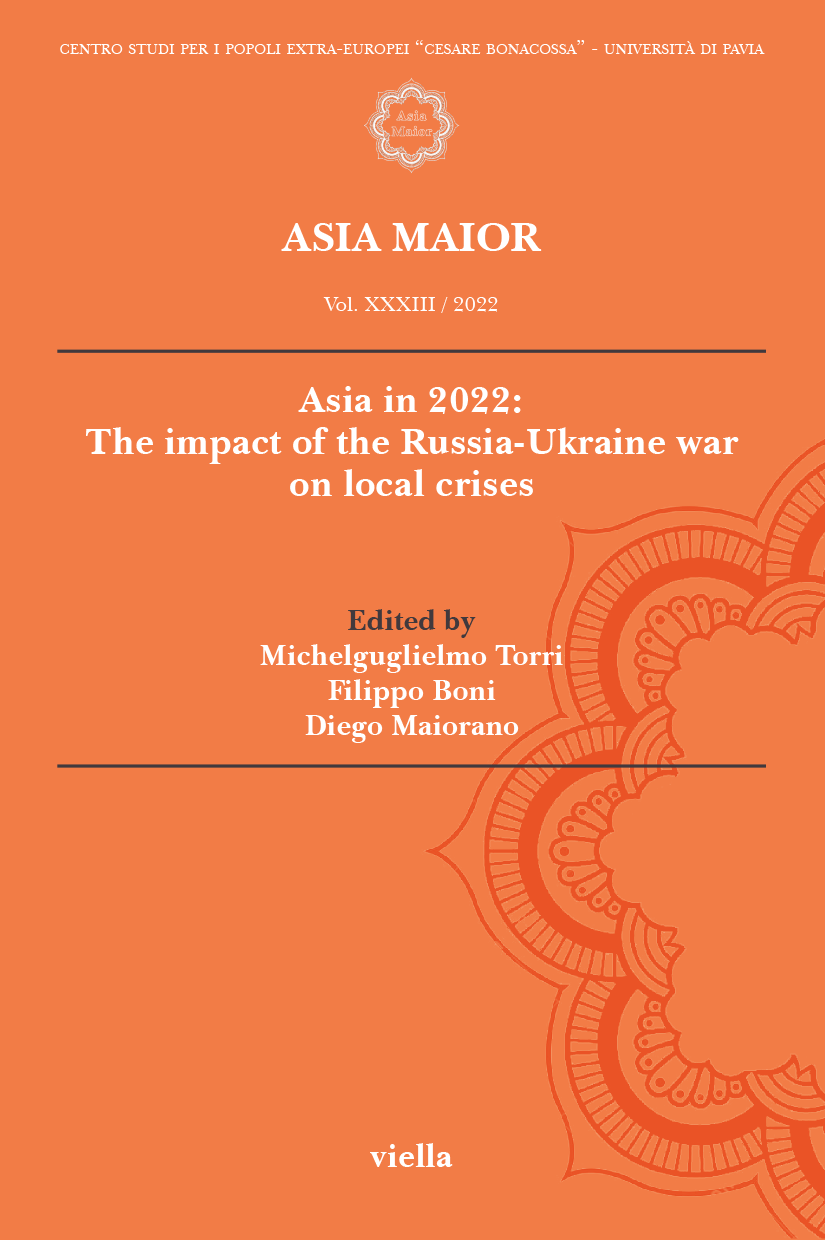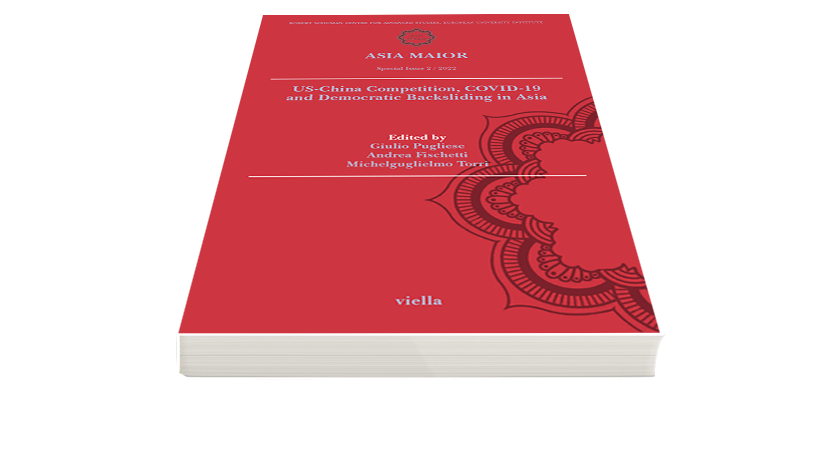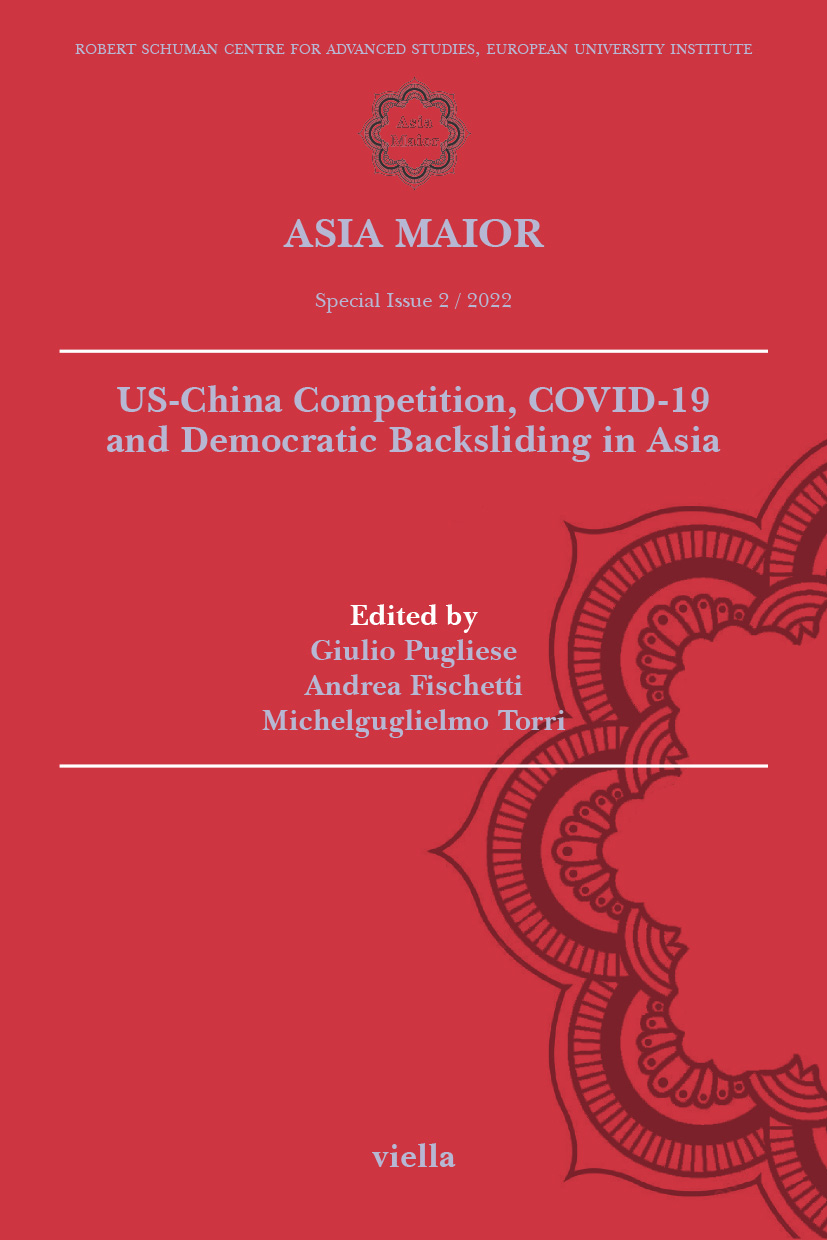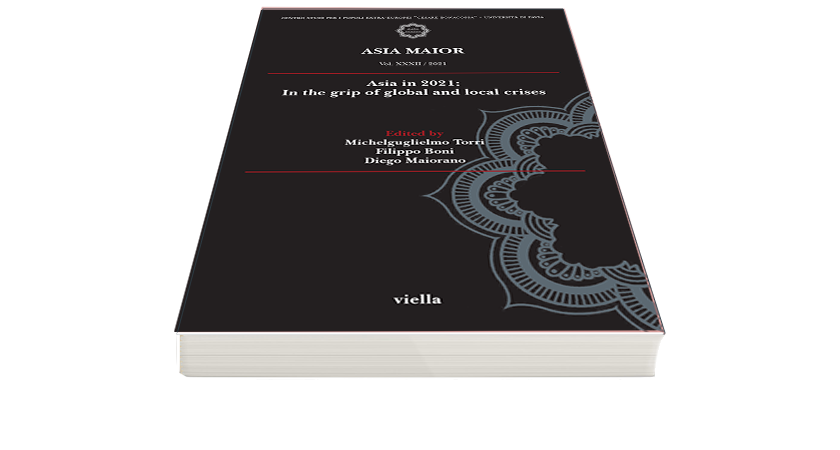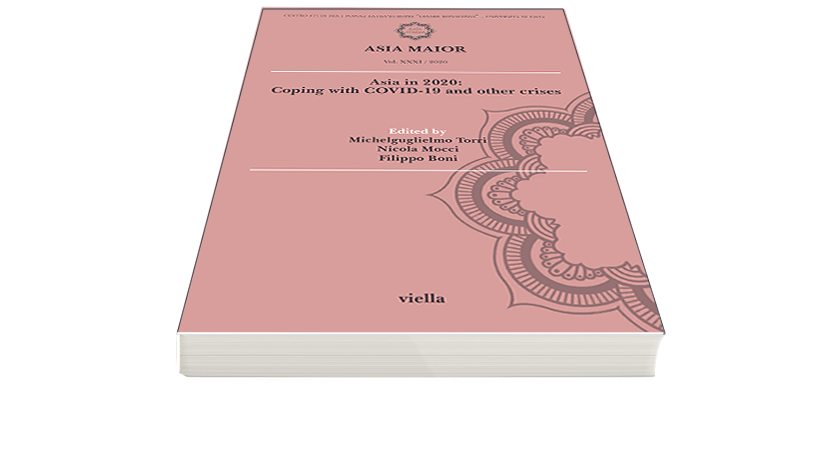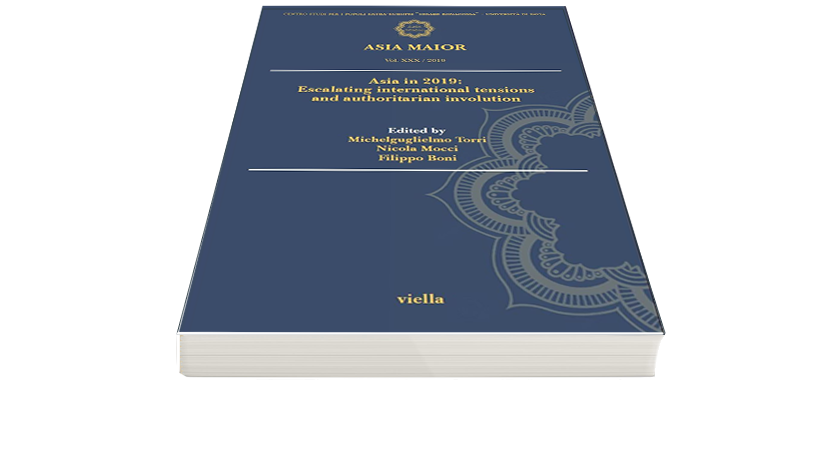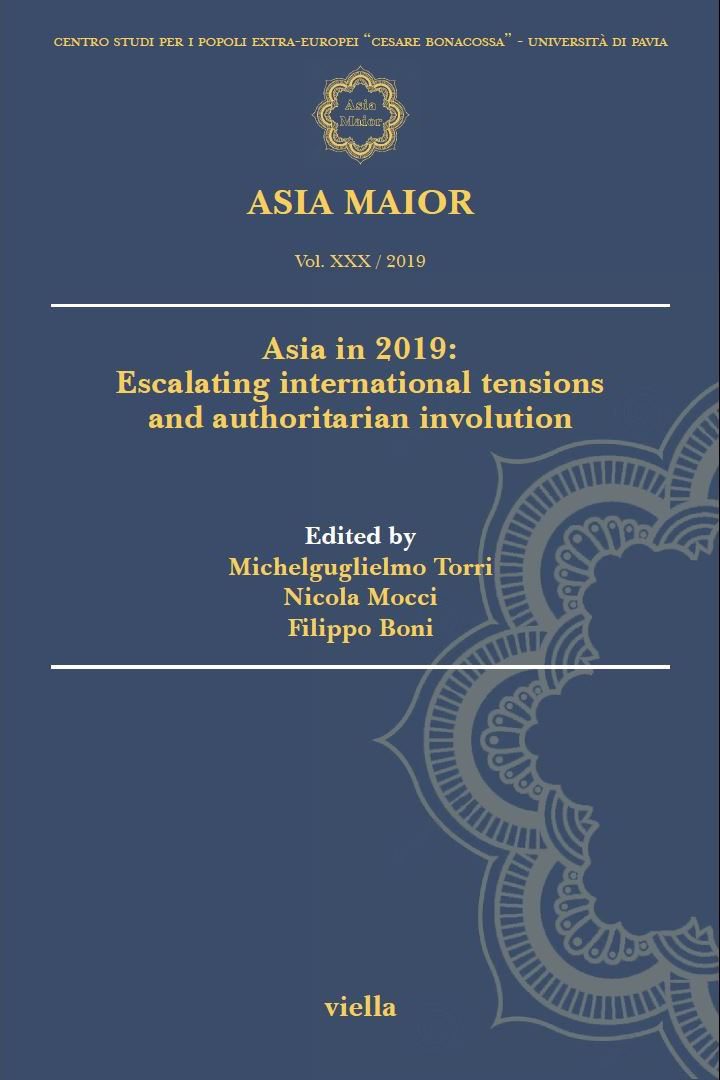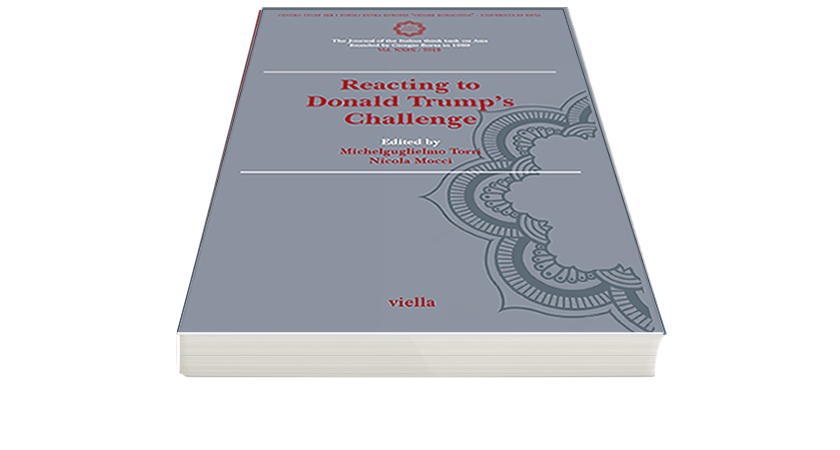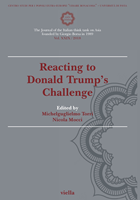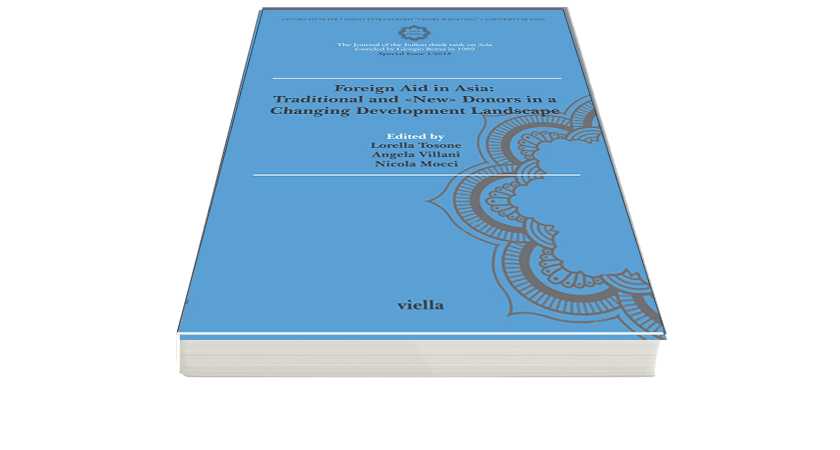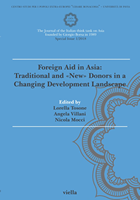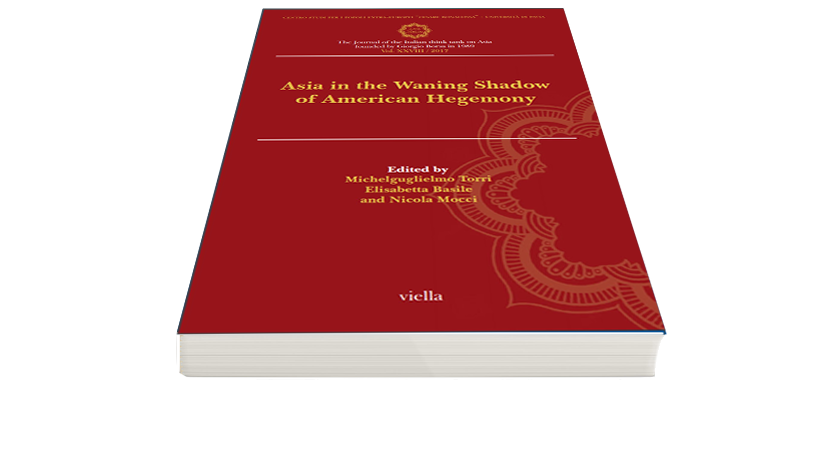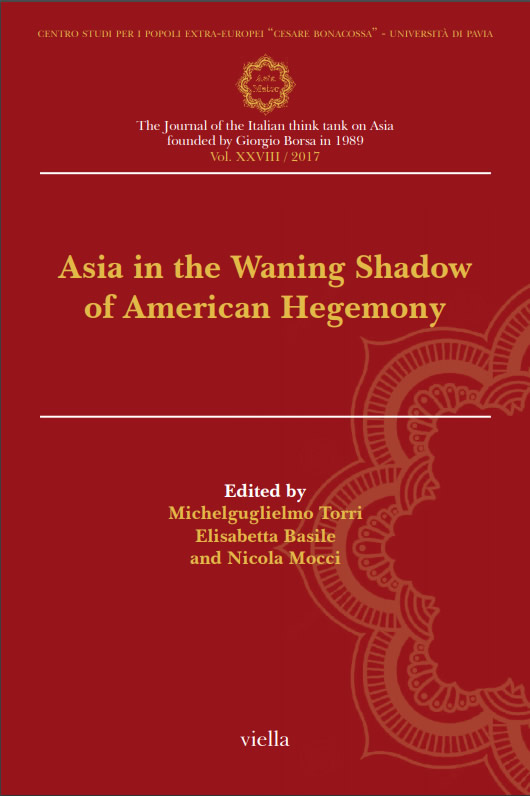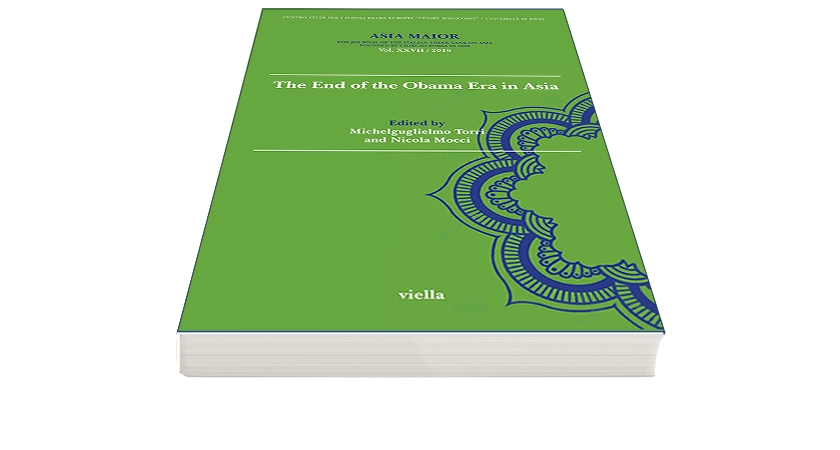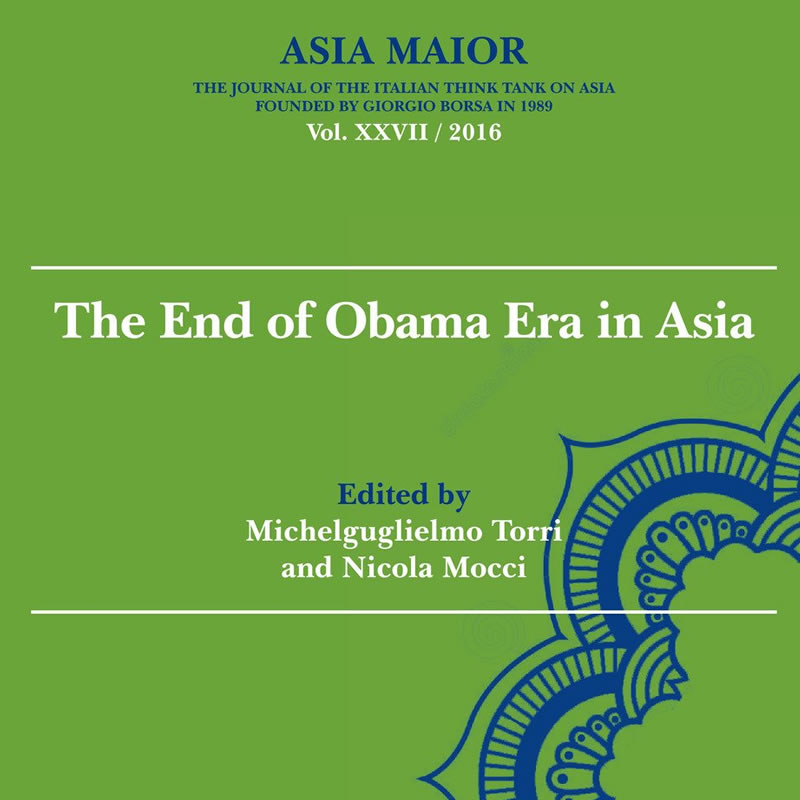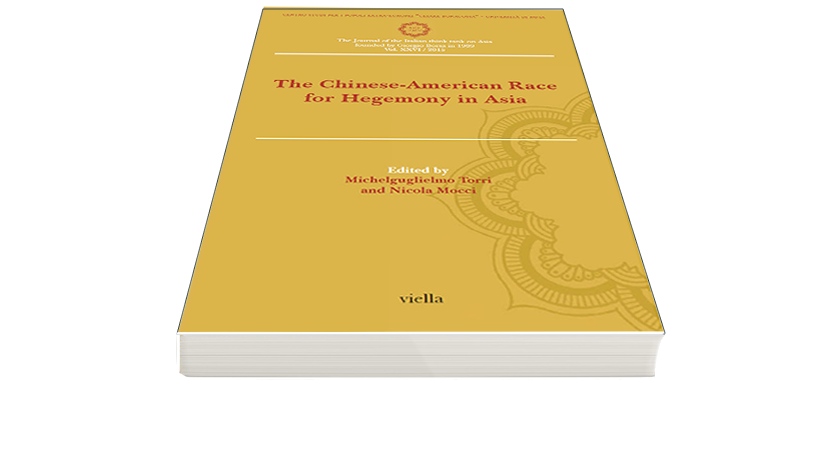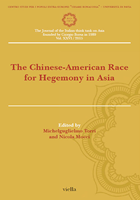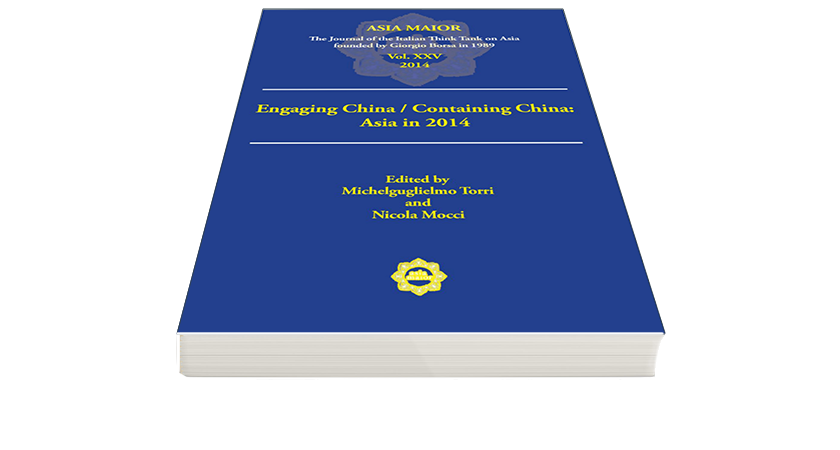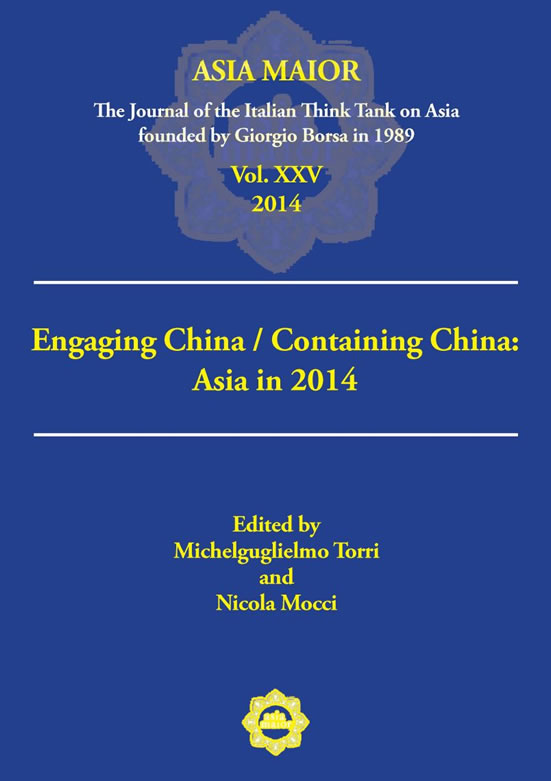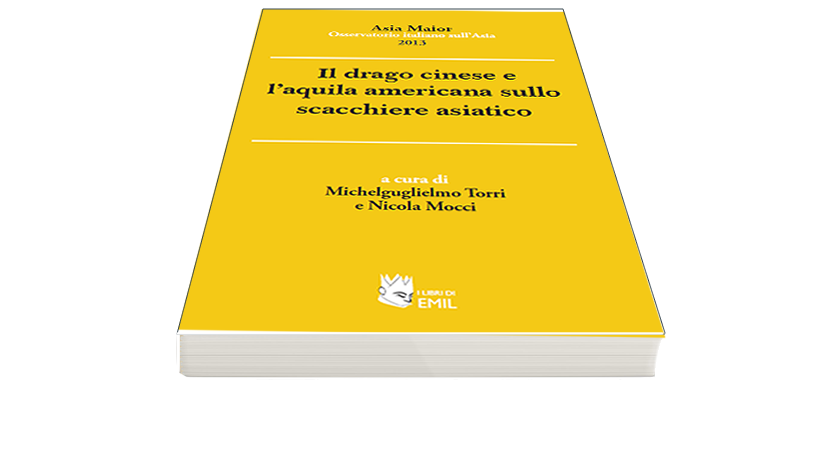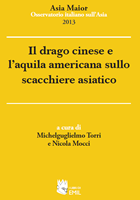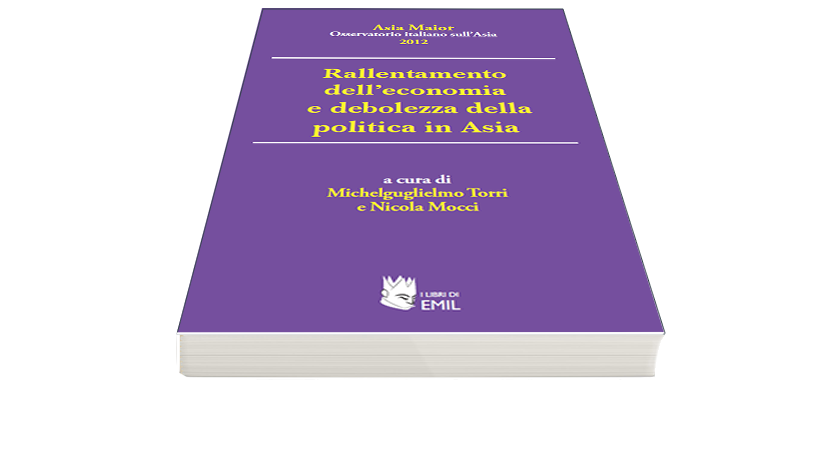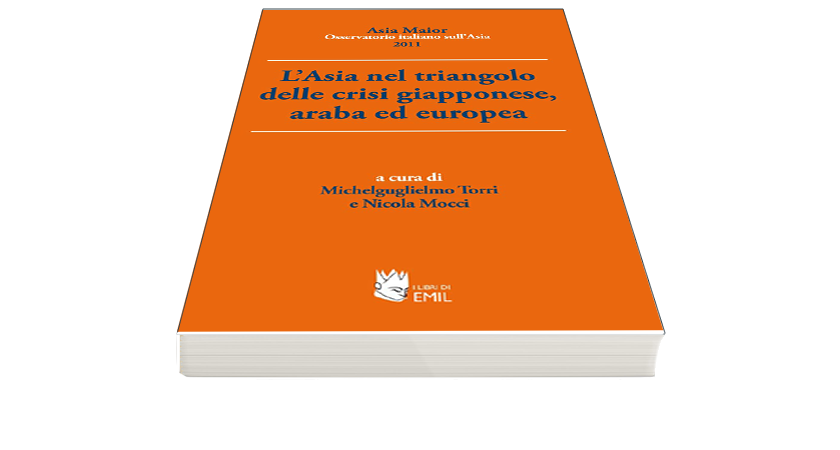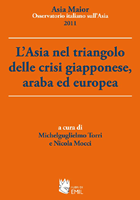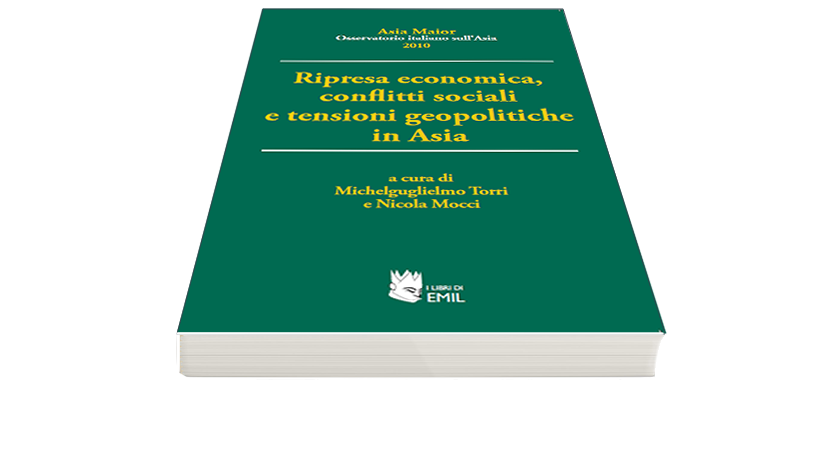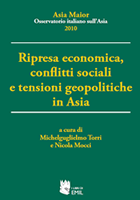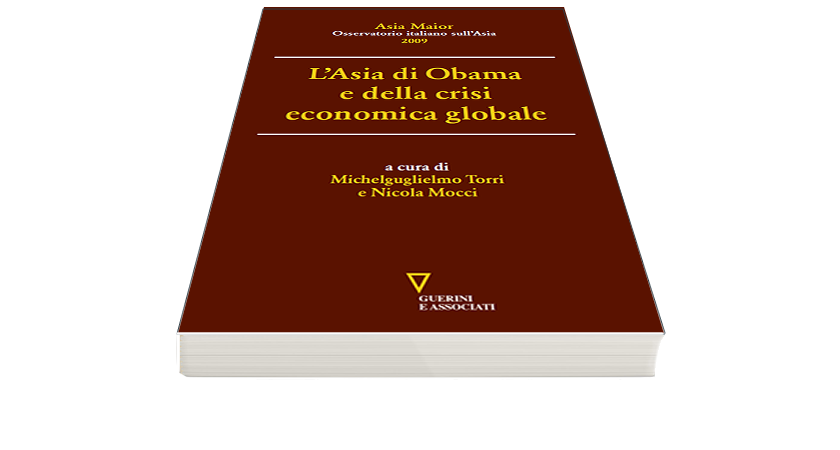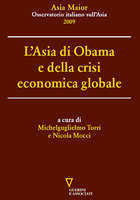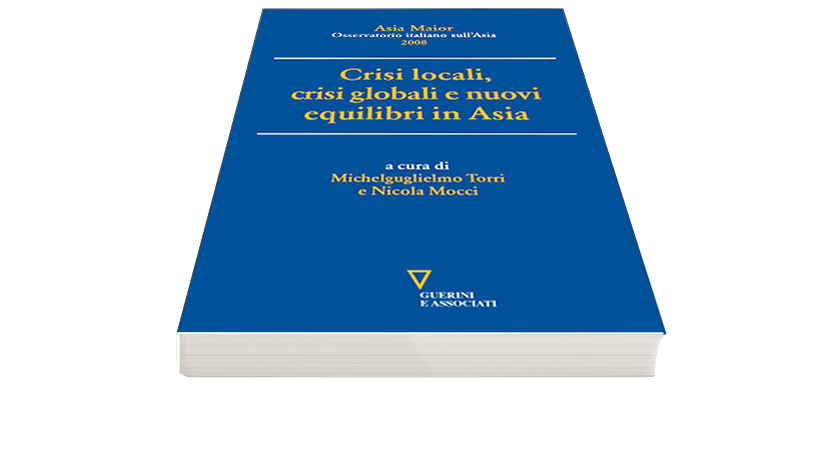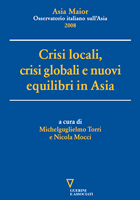Asia Maior in 2024: Under the sign of a declining democracy
Available also in pdf – Download Pdf
In 2024, the main developments characterizing the situation in Asia Maior1 were the same ones highlighted in the three previous issues of this journal, namely the growing tensions in the US-China relationship, the authoritarian involution ongoing in most Asian countries (as elsewhere in the world) and, finally, the fallout from the wars ongoing in Western Eurasia.
In 2024 no radically new happening has modified these trends, discussed at length in the previous three Asia Maior volumes. Or, more accurately, the only radically new development that did happen took place outside Asia, being represented by Donald J. Trump’s election to the US Presidency on 5 November. This is an event bound to heavily impact on the situation in Asia (as, of course, the world at large), radically influencing, one way or another, all the three trends which this journal has single out as characterizing the evolution of Asia. But, of course, the impact of the November 2024 election in the US will take place and become visible only once Trump comes into office (on 20 January 2025); therefore, it is outside the scope of this essay.
If, however, it is true that no major change has characterised the evolution of the three major ongoing developments in Asia, something has happened which has cast much light on one of them, namely the process of authoritarian involution. The issue here is not so much that unexpected new developments or noteworthy changes have taken place in the ongoing contraction of freedom in Asia Maior – although a few minor ones did take place – but the fact that an unusually high number of elections has supplied a lot of information on the modalities of the current authoritarian process and the (rare) counter-tendency which are nevertheless at work to reverse it.
As this author has already noted in the past, the degree of freedom or lack of it in any given country varies even in autocracies, and, in the past years, in Asia, the existing (and more or less limited) degree of freedom has been undergoing a visible and conspicuous contraction even in openly authoritarian countries.2 Therefore, discussing the state of democracy in Asia by analyzing the modalities, results and consequences of the elections which took place there in 2024 gives us only a partial view of the general
|
Table 1 – Elections in Asia in 2024 |
|||
|
Country |
Date |
Kind of election |
|
|
1 |
Bangladesh |
7 January |
Legislative |
|
2 |
Bhutan |
9 January |
Legislative (2nd round) |
|
3 |
Taiwan |
13 January |
Presidential & legislative |
|
4 |
Azerbaijan |
7 February |
Presidential |
|
1st September |
Legislative |
||
|
5 |
Pakistan |
8 February |
Legislative |
|
6 |
Indonesia |
14 February |
Presidential & legislative at the national, provincial and regency level |
|
27 November |
election of regional heads |
||
|
7 |
Cambodia |
25 February |
Senate |
|
8 |
South Korea |
10 April |
Legislative |
|
9 |
India |
19 April – 1st June |
Legislative |
|
10 |
Maldives |
21 April |
Legislative |
|
11 |
Thailand |
9-26 June |
Senate |
|
12 |
Mongolia |
28 June |
Legislative |
|
13 |
Iran |
1 March |
Legislative (1st round) and Assembly of Experts |
|
10 May |
Legislative (2nd round) |
||
|
28 June and 5 July |
Presidential |
||
|
14 |
Sri Lanka |
21 September |
Presidential |
|
14 November |
Legislative |
||
|
15 |
Uzbekistan |
27 October |
Legislative |
|
16 |
Japan |
27 October |
Legislative |
situation. However, although partial, the view offered by elections held in 16 countries, including some of the most populous in the world, represent a highly significant statistical sample to assess the health of democracy and freedom in Asia. Therefore, the remainder of this essay is focussed on this topic.
dc
As noted by Joshua Kurlantzick of the Council on Foreign Relations, «despite all the voting, 2024 was not exactly the year of democracy».3 As argued by Kurlantzick and explained at length in the articles collected in this volume, autocratic leaders made use of a variety of means – cheating, detention of political adversaries, intimidation of the media, draining the economic resources available to opposing parties – to assure their own permanence in power. This does not detract from the fact that some of the elections carried out in 2024 in Asia were effective democratic exercises, which changed the local political set up. Accordingly, the many elections which took place in Asia Maior in the year under review can be seen as an opportune Ariadne’s thread that will enable us to find our way through the labyrinth of the domestic politics of the Asian states. We will follow this thread not according to the chronological order of the elections, but rather on the basis of the demographic relevance of the nations involved. Which, of course, brings us to start our examination with the most populous democracy not only in Asia but in the world, namely India.
dc
This journal has been documenting the continuous democratic involution ongoing in India since Narendra Modi’s ascent to the prime ministership. While India still boasts to be the largest democracy in the world, the ongoing democratic involution has gradually transformed the South Asian country into an electoral autocracy or – to make use of an Italian term which conflates «democrazia (democracy)» and «dittatura (dictatorship)» – into a «democratura», namely something in between a democracy and a dictatorship.
In 2024, on the eve of the Indian general elections, practically any forecaster was convinced that Narendra Modi and its BJP would effortlessly bag their third consecutive victory, winning an absolutely majority at the Lok Sabha (the Lower House, with predominant powers). In fact, Modi was openly aiming to win a two-thirds majority for the BJP, and appeared convinced he would be able to achieve it. This, in turn, would have made possible a change of the Constitution, formally transforming the theoretically still secular Indian republic into a Hindu Rashtra, that is, a Hindu state.
These forecasts were based on a plethora of factors, but, among them, perhaps the most realistic and, therefore, most convincing one was the fact that, as any intelligent independent observer could easily realize, the playing political field, far from being a level one, was heavily skewed
|
Table 2 – Asian countries where elections were held in 2024 ranked by population |
||
|
1 |
India |
1,463,865,525 |
|
2 |
Indonesia |
285,721,236 |
|
3 |
Pakistan |
255,219,554 |
|
4 |
Bangladesh |
175,686,899 |
|
5 |
Japan |
123,103,479 |
|
6 |
Iran |
92,417,681 |
|
7 |
Thailand |
71,619,863 |
|
8 |
South Korea |
51,667,029 |
|
9 |
Uzbekistan |
37,053,428 |
|
10 |
Sri Lanka |
23,229,470 |
|
11 |
Taiwan |
23,112,793 |
|
12 |
Cambodia |
17,847,982 |
|
13 |
Azerbaijan |
10,397,713 |
|
14 |
Mongolia |
3,517,100 |
|
15 |
Bhutan |
796,682 |
|
16 |
Maldives |
529,676 |
|
Source: Worldometer (https://www.worldometers.info/population/countries-in-asia-by-population/) |
||
in favour of Narendra Modi and the BJP. As pointed out in this same volume by James Manor, the ruling BJP had a number of unfair advantages. Not only it had vastly more money to spend than all other parties put together, but, as if that was not enough, the bank accounts of the Congress Party, the BJP’s main rival, were frozen on dubious legal grounds. Also, the leader of another prominent rival party was jailed, again on dubious legal charges. Equally important, Modi had gained full control of the Election Commission which, far from ensuring fairness, as it was supposed to do, helped him. On 110 occasions, the Election Commission took no action when Modi’s speeches, during the electoral campaign, violated the existing model code of conduct. Modi also controlled most print, television and online news outlets.4
Quite unexpectedly, however, in spite of all the BJP’s unfair advantages, the result of the elections was that, although Modi-led BJP remained the biggest party in the new Lok Sabha, not only it did not reach the two third majority to which Modi had openly aimed – and which would have allowed to change the constitution – but lost the absolute majority which it had enjoyed in the previous two terms. This, in turn, forced Modi to form a coalition government with two other parties, whose support was necessary to have a majority. Apparently, therefore, Modi’s victory at the 2024 general election had been a pyrrhic one, which prompted most observers to conjecture that Modi would be forced to reverse, or at least slow down, his unrelenting drive aimed at building an increasingly authoritarian Hindu Rashtra. Unfortunately, as again documented by James Manor in this same volume, this did not happen. Modi’s relentless and systematic hollowing out of a whole array of political institutions, his government’s harassment of non-governmental organisations, the smothering of independent voices, the demonization and brutalization of India’s Muslim and Christian minorities continued unabated. While opposition forces in India, at both the political and grass roots levels, were still active, Modi continued to unwaveringly carrying out his authoritarian design. And the possibility that it could be stopped in a near foreseeable future appeared to be decidedly scanty.
dc
In a way, the elections in Indonesia, the third most populous country in Asia were, technically speaking, even more impressive that the ones in India. On 14 February, in the world biggest single day election, Indonesian voters chose a new president and vice president, a new parliament and the members of regional legislatures at the province and regency/municipal level.5 Some months later, on 27 November, in the «simultaneous regional election», they chose 37 governors and vice governors (the heads of the provinces),6 415 regents and vice-regents (the heads of the regencies, namely the mainly rural administrative divisions below the province and above the districts) and 93 mayors and vice-mayors (the heads of the cities, the urban administrative division that, in Indonesia, is on a par with the regency).7
Under the system in place, the president and vice president are elected in tandem by majority vote, whereas the lawmakers are elected according to a proportional representative system. Also, the president/vice president duo is elected at the first round if it wins at least 50% plus a fraction of the overall vote and at least 20% of the votes in more than half the country’s provinces. On their part, in order to be represented in the National Assembly, the parties must pass a threshold of 4% of all valid votes. This threshold, however, does not apply for regional legislatures.8 In the case of the election of the regional heads, the electoral system is the first-past-the-post.9
The two waves of elections took place in the concluding months of the second and, according to the Constitution, final term of President Joko «Jokowi» Widodo. Although technically on the eve of political retirement, Jokowi played a key role in both waves of elections and, most particularly, in the election of the new president. As pointed out by Riwanto Tirtosudarmo and Peter Carey in this volume10 and by other analysts elsewhere, Joko Widodo’s activism aimed to prefigure a political situation in which, even after the end of his presidential term, he would continue to retain considerable political power through his ability to influence the new president and the main parties represented in the legislative assemblies.
When first elected and at the start of his incumbency, Joko Widodo had been seen as a bright hope for Indonesian democracy. However, in the course of the years, his democratic credentials had dimmed, his government style had become increasingly authoritarian and, by the end of his ten-year incumbency, the former democratic champion had morphed into «a despot prepared to bend the political establishment to his will».11 In particular, in the concluding two years of his 10-year presidency, Jokowi ruthlessly operated in order to maintain his political power. After vainly trying to be allowed to run for an unconstitutional third term or, at least, to have his second term extended, Joko Widodo entered into an alliance with another candidate to the presidency, Prabowo Subianto. It was an alliance predicated on Prabowo’s acceptance as his running mate, namely as the candidate to the vice-presidency, of Jokowi’s eldest son, Gibran Rakabuming Raka. Gibran’s candidacy itself was made possible by a constitutional amendment which lowered the minimum age of a candidate in order to accommodate the 36-year-old Gibran. As noted by Tirtosudarmo and Carey, the fact that the serving Constitutional Court Chief Justice, Anwar Usman, was Jokowi’s brother-in-law, «was not immaterial to this case».12 Eventually, Usman’s decision cost him his job, as he was voted out of office by his peers just a week after his controversial ruling. But, by then, the harm had been done and the path to the alliance between Jokowi and Prabowo had been paved.
In a way, that of Jokowi was an alliance with the devil, as Prabowo’s past was a very controversial one. A former general who had headed the murderous Indonesian Special Forces (Kopassus) in 1995-1998, Prabowo had been an active participant in the genocidal repression in Timor Leste, had been suspected to be the responsible of the abduction, disappearance and murder of Indonesian democracy activists, and had allegedly attempted, although unsuccessfully, to force then President Habibie to appoint him army chief of Staff, by threatening to militarily take over the presidential palace and imprison Habibie (24 May 1998). After having been dismissed from the army and forced to go into voluntary exile, Prabowo had returned to Indonesia and undertaken a very successful business career, which, eventually, had opened his path to his entering politics. In 2008 Prabowo created his own political party, Gerindra, and in 2014 and 2019, entered the presidential elections, losing to Jokowi. However, Jokowi and Prabowo eventually formed an alliance, and the latter was appointed minister of Defence during Jokowi’s second presidential term (2019-2024). In the course of time, the relationship between the President and his Minister of Defence became increasingly close and, once it became clear that Jokowi could not run for a third term, a pact between the two was made. It was predicated on Jokowi’s support for Prabowo’s candidacy as president and the latter’s acceptance of Jokowi’s son Gibran as his running mate. 13
No doubt, Jokowi’s support was a crucial element in strengthening Prabowo’s possibility to win the Presidency. First, Jokowi still enjoyed a considerable popular appeal; second, and equally important, much of Jokowi appeal was based on a network of non-party political organizations and an army of «buzzers», namely influencers, who, as such, were skilful in the utilization of social media.
Identified by some analysts as «cyber troops», characterized by three crucial features, «being secretly funded, highly coordinated, and involving mostly anonymous accounts»,14 these cyber troops crafted a completely new image of Prabowo. Still in 2014 and 2019, when unsuccessfully campaigning for the Presidency, Prabowo had presented himself as a strongman and had «frequently donned his military uniform and rode his horse on stage like a victorious marshal».15 Now, in 2024, particularly thanks to a massive and skilful use of the TikTok network, Prabowo image was transformed in that of «a sweet (gemoy) grandad, dancing (joget) his way across the stage».16 It was an extremely successful campaign, which completely obscured Prabowo’s bleak past and convinced «a majority of voters from the Millennial and Gen Z generations, who made up more than half the electorate» to vote for the Prabowo/Gibran duo.17
Third, apart from his perduring popularity and the support of his cyber troops, Jokowi, whose presidential term was to expire on 19 October, was still in the position to mobilize state resources in support of his preferred candidates. In doing so, both seductions and threats were massively used. The former «took the form of direct free social welfare handouts or “bansos” (bantuan sosial) through the local village (desa) and urban ward (kampung) heads».18 The latter found expression in the discreet warning by police officers to village heads that corruption investigations would be launched, but would be dropped in the event of Prabowo’s victory.19
The result of all this was the victory of the Prabowo/Gibran duo at the first round of the presidential election, with 58% of the votes. While the Prabowo/Gibran victory – officially announce on 20 March – was far from being unexpected, what had been unforeseen was that it could take place in the first round. This could not but strengthen both the political position of Prabowo and Jokowi’s influence on him. A direct consequence of Prabowo’s triumph was that the alliance of parties which had supported his candidacy, the Advanced Indonesia Coalition (Koalisi Indonesia Maju or KIM), expanded, including some additional parties and becoming KIM plus.20
Nonetheless, as noted by Tirtosudarmo and Carey, the results of the conterminous legislative elections «did not go all Jokowi’s way».21 Rather surprisingly, given the magnitude of the victory of the Prabowo/Gibran duo, it was a party which had not backed Prabowo at the presidential election, namely the centre-left secular-nationalist Indonesian Democratic Party of Struggle (Partai Demokrasi Indonesia Perjuangan or PDI-P), led by Megawati Sukarnoputri, which «won the highest number of seats (110 out of 580), or 19% of the seats contested, in the Indonesian parliament». This had been made possible by the fact that the PDI-P had «garnered the largest percentage (15%) of the popular vote (25,000,000)».22
The legislative results showed how politically powerful the PDI-P remained at the grass roots, particularly in its traditional stronghold in Central Java. Also, the emergence of the KIM plus, which de facto included all major political parties but the one headed by Megawati, revealed that the PDI-P was the only political force able and willing to play an effective opposition role. This explains why both Prabowo and Jokowi set to work to isolate the PDI-P and to consolidate their political power through a new victory in the forthcoming regional heads elections. Jokowi, still in power, on 22 July signed a Presidential Regulation permitting faith-based mass organisations to extract natural resources. This permit, rejected by Chrisian organisations but accepted by the two largest grassroots Muslim organisations, the Nahdlatul Ulama (NU) and the Muhammadiyah, had the transparent goal to assure their political support for the candidates sponsored by Jokowi and Prabowo. Also, in the attempt to favour the major parties gathered in the KIM plus, Jokowi endeavoured to revoke the Constitutional Court’s ruling of 20 August 2024, which «drastically reduced the percentage of popular vote required of political parties to propose their own candidates for governor and mayor in the upcoming local election».23 It was a reduction which favoured the smaller parties, mainly outside the KIM plus coalition. It was an attempt, which, however, spectacularly failed, because of the wave of protest which engulfed the country, determining a visible decline in Jokowi’s own popularity. On his part, Prabowo, in a speech on 28 August, openly theorized the coming together of the «Indonesian elites» and the fact that there was no need for «opposition, conflicts».24 This «coming together» became visible when the names of the members of the new government were announced on 20 October, the day when Prabowo’s presidential term officially started. They included not only members drawn from Prabowo’s own party and many Jokowi’s loyalists,25 but representatives of all the major Indonesian parties, with the exception of the PDI-P.26
These manoeuvring took place in a contest in which Jokowi’s policies during his presidential terms had brought about an enhanced centralisation of power, «making regional governments more dependent on Jakarta for funding, licensing and regulatory approvals».27 Not surprisingly, in this situation both candidates and voters appeared aware of the advantage for local governments to have good political connections with Jakarta. This, of course, could not but advantage the candidates fielded by the KIM plus coalition in the forthcoming regional heads elections.
The end result of this configuration of factors was the success at the regional heads elections of 27 November of the candidates of the parties belonging to the coalition in power, and, in particular, of Prabowo’s own party, Gerindra.28 Megawati’s PDI-P spectacularly lost even in areas formerly considered as its strongholds, such as West, Central and East Java. Its only consolation prize was its «wafer thin (50.07%) first round victory» in the contest for the Jakarta governorship.
Summing up, at the end of a year signed by two massive waves of elections in the third most populous country in Asia – which is also, after India and the US, the third largest country making use of regular elections – the outlook for democracy appeared decidedly negative. What had happened in 2024 could be assessed as representing the beginning of a most likely return to the earlier authoritarian regime, namely the New Order military-style administration of Prabowo’s father-in-law, Suharto. As Professor Yatun Sastramidjaja pithily remarked: «Some 26 years after the end of the authoritarian New Order rule, this election year marked the triumphant consolidation of power of an oligarchic elite that is poised to pursue its interests by hijacking democratic institutions».29 As documented by Tirtosudarmo and Carey in their articles in this journal, and as pointed out by Yatun Sastramidjaja in her article in ‘Inside Indonesia’, this is an illiberal turn that does not come as a surprise, as has been in the making since 2017, becoming increasingly strong since the 2019 elections, which saw the beginning of Joko Widodo’s second presidential term.
dc
In Pakistan, the general election took place in a situation in which the real political power – as during most of Pakistan history – was in the hands of the military. The most popular politician in the country, Imran Khan, who had been prime minister from August 2018 to April 2022, had eventually been removed from power through a no-confidence motion. As noted by Marco Corsi, although the ousting of the Khan government had been officially motivated by economic misrule, it was ultimately driven by friction over foreign and domestic policy decisions, which had resulted in Khan losing the support of the Army.30
After his removal from power, Khan went through a veritable way of sorrows, becoming the target on an attempted assassination (November 2022) and being accused of a colourful, multiple and not very credible series of crimes. These crimes included corruption, buying and selling gifts in state possession, leaking state secrets, breaching Islamic marriage law. Always convicted with sentences which were often ultimately overturned, at the beginning of 2024, on the eve of the general election, Imran Khan was in jail. Also, his party, the Pakistan Tehreek-e-Insaf (PTI), was barred from competing in the election, while many party leaders were jailed, and their relatives, supporters and independent journalists were allegedly harassed by the military. This did not prevent the politicians affiliated with Khan’s PTI to compete in the election as independent candidates, securing not less than 101 parliamentary seats for themselves. This made the officially non-existing PTI the strongest party in a National Assembly of 342 members. Nonetheless, this was not sufficient to open the way to power for the PTI members. As detailed by Marco Corsi, protracted negotiations culminated in the formation of a government coalition which excluded the PTI members and was purportedly endorsed by the military establishment.31
While Imran Khan’s popularity remained paramount, the political playing field continued to be under the control of the military, which not only had marginalized Imran Khan but had played a dominant role in shaping the electoral outcome and the formation of the new government. A further demonstration of the military’s willingness to permanently put Imran Khan and his party out of business through legal means came in December, when Imran Khan and no less than 142 other PTI members were indicted by the Rawalpindi Anti-Terrorism Court.32
dc
In Bangladesh, the general election was held in January 2024, after a year of increasing political tension, characterized by recurring clashes between the police and opposition political parties. The election was boycotted by the main opposition parties and took place amid widespread allegations – voiced not only by the opposition but also by international observers – of foul play on the part of Awami League, the ruling party. Not surprisingly, in an election which was neither free nor inclusive, the connivance of the bureaucracy and law enforcement agencies resulted in a smashing victory for the Awami League. This assured the continuation in power as prime minister of Sheik Hasina for the fourth consecutive time.33
Sheikh Hasina’s fraudulent victory, however, did not stop the ongoing political struggle against her rule, which was spearheaded by the students. At the beginning of August, the situation had become so tense that, while the police carried out night-time raids to arrest the students involved in the protests, the government gave the police a «shoot-on-sight» order, deployed the Army and shut down internet access for 10 days. However, on 3 August, while a new and bigger student demonstration was gathering in Dhaka, calling for the Government’s resignation, the chief of Army Staff, General Waker-Uz-Zaman, announced that the Army would not take part in the ongoing police crackdown against protesters.
This was the turning point in the political struggle, as two days later, on 5 August, Hasina fled to India by helicopter. Bangladeshi President Mohammed Shahabuddin stepped in, dissolved the parliament and called Nobel prize Muhammad Yunus to head a provisional government with the title of chief adviser. While, as explained by Silvia Tieri and Raian Hossain, the situation remained difficult, what had come to be known as the Monsoon Revolution had opened the path – maybe one that was anything but wide and easy to walk – toward a new phase in the political history of the country. A democratic restoration, accompanied by the fight against rampant corruption, and the pursuit of a more equitable growth, now appeared to be a concrete possibility, even if, by no way, a foregone conclusion.
dc
Summing up what has been written so far, elections in the four most populous Asian democracies had not brought about any improvement in the respective democratic spaces – although, in the case of Bangladesh, this result had later been rectified by the «Monsoon Revolution». The case of the fifth most populous Asian democracy, Japan, however, is different. In a country where, contrarily to what was the case in the Asian countries discussed so far, elections were not expected, they not only took place but, according to some analysts – including Raymond Yamamoto and Marco Zappa, the authors of the Japan article published in this volume 34 – brought about a strengthening of the local democracy.
The process that led to the unexpected snap election for the lower chamber of Parliament or House of Representatives, the more important in the bicameral Diet, had been started by the crisis ongoing since 2023 in the majority party, the Liberal Democratic Party (LDP). Caused by scandals involving dozens of party members, including also the staff and close aides of the incumbent prime minister, Fumio Kishida, the crisis had weakened both the party and its leader. Kishida, after taking a series of initiatives aimed at overcoming the LDP internal crisis, eventually decided not to run for re-election to the party presidency. This was a turning point, as the LDP presidency is a sine qua non to assuming the position of prime minister in LDP dominated governments. In the ensuing free-for-all internal battle for the presidentship of the party – and, hence, the prime ministership – the winner was Ishiba Shigeru. A second-generation politician, who had been a member of the Lower House continuously since 1986, and served in ministerial posts and high-ranking party positions, Ishiba had previously tried his hand at becoming party president no less than four times, without ever being successful. 35
Once in charge as party president, Ishiba, on the eve of being confirmed prime minister by the Diet, made known his decision to dissolve the Lower House. He wanted his election as premier not to be the result of «obscure party processes»36 and the Diet vote, but of the popular vote.
The ensuing election was only partially successful for the LDP; while emerging, once again, as the largest party in the House of Representatives, the LDP not only lost that absolute majority which it had enjoyed since 2012, but was not in the position to form a majority government even with the support of its junior ally, the Kōmeitō (NKP). In this situation, with no party and no coalition able to have the absolute majority, the Diet, in the special session convened on 11 November, confirmed Ishiba as prime minister, although this time at the head of a minority government.
According to well-known analyst Tobias Harris, quoted in this volume by Yamamoto and Zappa, Ishiba, differently from most Japanese politicians, had an «idealistic» approach to politics, aimed at building a «purer and most humane Japan».37 It is therefore possible, as hypothesized by Yamamoto and Zappa, that the political set-up which had emerged following the 2024 election was not far from Ishiba’s own preferences. A politician who was declaredly willing to «listen» to and «empathize» with his political opponents, Ishiba favoured a more democratic political style than the one traditionally followed by LDP.38
This took shape in the de facto national unity administration which emerged following Ishiba’s election as head of a minority government; it was an administration characterized by the allocation of the presidency of several Lower House Standing Committees and other positions of power to the Constitutional Democratic Party (CDP). As pointed out by Yamamoto and Zappa, the political conjuncture that was taking shape after the 2024 elections makes it possible to assert that «after a decade of Prime Minister’s Office-led decision-making under [former PM Shinzō] Abe and Kishida», a paradigm shift had finally materialized in Japanese politics, «making way for a more concerted style of rule». In this situation, the de facto government of national unity «might actually enable, rather than hinder, progress in many fields, from tax system reforms to progress in gender equality and rights for sexual minorities».39
dc
In Iran three different elections took place in the year under review. Two were planned – the elections to the Islamic Consultative Assembly (the majles-e-shura-ye-eslami, usually shortened in Majles or Majlis)40 and to the Assembly of Experts (majles-e xobregân-e rahbari).41 The third one, the election to the Presidency, was unexpectedly and suddenly made necessary – in line with the Constitution – by the death of the incumbent President, Ebrahim Raisi, in a helicopter crash on 19 May 2024.
The elections took place inside a political system which is possibly the most complex presently existing in the world. In fact, it is a kind of centaur, made up of two seemingly irreconcilable parts, namely a theocratic structure, made up of a series of non-elected bodies – the Expediency Council, the National Security Council, the Council of Guardians, the Judiciary, the Islamic Revolutionary Guard Corps (IRGC) and others – interconnected with a number of elected institutions – the presidency of the Republic, the Majles, the Assembly of Experts, and the Municipal Councils.
These two parts, in which, in essence, the theocratic and unelected one has broad powers of control over the elected one, are both ultimately controlled by the leader of Iran or rahbar, who is elected for life – in theory by the Assembly of Experts42 – and enjoys almost unlimited powers. The rahbar has the constitutional power to supervise the work of the government and the implementation of the government policies, is the effective head of the armed forces, selects the heads of the armed forces, including the commander in chief of the elite Islamic Revolutionary Guard Corps (IRGC), can call referenda, and, last but not least, controls the unelected institutions, whose members are appointed by him, either directly or through indirect influence.43 As a result, the rahbar can make use of the unelected institutions as an additional means of control over the democratic section of the Iranian political system.
The political struggle in the Islamic Republic of Iran has been largely dominated by the confrontation between reformist factions and conservative ones, and has gone through different phases, which have sometimes seen the reformist factions to have the upper hand in the democratic section of the system.44 However, the prevalence of the reformist factions has always been temporary and fragile for the simple reason that, in the final analysis, the ultimate power is in the hands of the rahbar, and neither the first, nor the second and incumbent leader have shown any inclination to allow a real democratization of the political system. On the contrary, an involution process has been apparent since 2020, characterized by the rapidly increasing grip of the conservative factions on the electoral institutions. Since that date, this process has indeed gone to the extent of foreshadowing the disappearance of the reformist factions from the electoral competition.45
No doubt, the political decline of the reformist factions has been favoured by their inability to redress the state of the economy. In fact, when in power, they have been unable to implement effective economic reforms; also, the economic sanctions imposed on Iran by the international community, under the leadership of the US, have played a role. But, if the ongoing economic crisis has been the backdrop favouring the political decline of the reformist forces, it has been the will of the incumbent Rahbar, Ali Khamenei, which has started and given impetus to the process of authoritarian involution.
Khamenei’s longa manus in doing this has been the Guardian Council, among whose powers there is that of approving or disqualifying candidates seeking to run in local, parliamentary, presidential, or Assembly of Experts elections.46 By making use of its powers, the Guardian Council has severely limited the possibilities for the voters to choose non-conservative politicians, by massively disqualifying centrist and reformist candidates. This is a policy that had already become visible in 2002,47 but which has been pursued in an increasingly aggressive way since the presidential election of 2021.48
This, in turn, has had two main results, one expected and the other probably unforeseen. The former has been the handover of the electoral institutions into the hands of the conservative factions; the latter has been the drastic diminution of the voter turnout. As, in the Islamic Republic, electoral participation has always been considered a demonstration of popular support for the regime, the ongoing democratic involution means that the Rahbar has not hesitated to weaken the political legitimacy of the regime in order to tighten his hold on it. A possible explanation of this policy is that Ali Khamenei, being a man of advanced age (he was born on 9 April 1939), is preparing his succession, getting rid of any potential hurdles on the way of his son Mojtaba to become the next rahbar.
The three elections which took place in 2024 represented as many battlegrounds in which the confrontation between the conservative and reformist factions continued to take place. However, while the election to the Majles and the Assembly of Experts – which simultaneously started on 1 March49 – appeared to confirm the above discussed trend, characterized by the increasingly tighter grip of the conservative forces on the democratic section of the Iranian political system, the presidential election saw an unexpected setback for them.
As in the previous cases, the elections to the Majles and the Assembly of Experts were preceded by the disqualification of most reformist and centrist candidates by the Guardian Council. This made both elections effectively uncompetitive. While the voter turnout plummeted to around 41% – the lowest in the history of the Islamic Republic50 – the conservatives easily won both in the Majles and the Assembly of Experts.51
The Majles and Assembly of Experts elections were supposed to exhaust the 2024 electoral rounds in Iran, but, as already noted, President Raisi’s unexpected death on 19 May made a snap election to the Presidency necessary. Before his untimely death, Raisi «was widely anticipated to secure a second term with minimal resistance in the 2o25 presidential election». Also, «he was considered by many the designated successor of Ali Khamenei, the leader of the Islamic republic». Therefore, «neither the conservative, nor the reformist factions had actively prepared or promoted potential successors».52 In this situation of uncertainty, enhanced by the persistence of an unresolved economic crisis, widespread social discontent and the gradual but conspicuous erosion of Iran’s regional influence, and characterized by the fact that the reformist bloc was in disarray,53 the conservative camp overplayed its hand.
As usual, the Guardian Council produced a final list of candidates heavily slated in favour of the conservative camp, as four out of six approved candidates belonged to it, while the remaining two, Ayatollah Mostafa Pourmohammadi and Dr Masoud Pezeshkian, were considered moderate and reformist respectively.54 Two of the conservative candidates withdrew before the election, leaving in the running, as representatives of the conservative camp, Mohammad Bagher Ghalibaf, «a recurrent presidential candidate in 2005, 2013, and 2017»55 and the incumbent speaker of the Majles, and Saeed Jalili, who had also contended for the Presidency in 2013 and 2021, had been the chief nuclear negotiator and the secretary of the Supreme National Security Council in the years 2007 to 2013, and was a confidant of the Rahbar.
Although, within the conservative camp itself, there are very clear fracture lines setting apart various groups, as a rule, on the occasion of the presidential elections, the conservative politicians act «as a singular entity and different presidential candidates from this group are only to provide cover to their main candidate».56 On the contrary, in 2024, possibly taking for granted the inability of the reformists to organise an effective challenge to the overwhelming power of the conservatives, the two conservative candidates proved either unable or unwilling in reaching a pre-poll political settlement.57 The result was that the pro-conservative vote split, while, on the contrary, the reformist vote went in its almost totality to Pezeshkian. Hence, surprisingly, on 28 June 2024 Pezeshkian emerged as the front runner (44.36% of the vote), followed by Jalili (40.35%), and Ghalibaf (14.41%), while Pourmohammadi won less than 1% of the vote [see Table 3].
As no candidate had reached the required 51% of the votes, the two top candidates went to a runoff on 5 July. Significantly there was a conspicuous surge in the voter turnout, the number going up from some 24,5 million to around 30,5 million, and Pezeshkian emerged as the clear winner, with 54.76% of the votes against Jalili’s 45,24% [see Table 3].
This was a result that had been made possible not only by the fact that, clearly, the voters sympathising for the reformist camp had seen the possibility to allow a reformist candidate to win, but, according to some analysts, by the fact that many of the supporters of the other conservative candidate, Mohammad Bagher Ghalibaf, chose to vote for Pezeshkian rather than for Jalili.58 Basically, Jalili was seen as so far to the extreme right that he was not an acceptable candidate even for a part of the conservatives.59
Pezeshkian’s election brought to the presidency a politician of a quite different hue to that of his extremely conservative predecessor. The new President had been critical of the role of the morality police during the Mahsa Amini protests of 2022; had promised to improve the status of women’s rights; had vowed to relax the compulsory hijab laws and abolish the morality police. He also announced the end of the ban on the internet, arts and culture.60
|
Table 3 – Iranian Presidential elections results in 2024 |
||||
|
Candidates |
First round |
Second round |
||
|
Votes |
% |
Votes |
% |
|
|
Saeed Jalili |
9,473,298 |
40.35 |
13,538,179 |
45.24 |
|
Mostafa Pourmohammadi |
206,397 |
0.88 |
||
|
Mohammad Bagher Ghalibaf |
3,383,340 |
14.41 |
||
|
Masoud Pezeshkian |
10,415,991 |
44.36 |
16,384,403 |
54.76 |
|
Total |
23,479,026 |
100.00 |
29,922,582 |
100.00 |
|
Valid votes |
23,479,026 |
95.70 |
29,922,582 |
98.01 |
|
Invalid/blank votes |
1,056,159 |
4.30 |
607,575 |
1.99 |
|
Total votes |
24,535,185 |
100.00 |
30,530,157 |
100.00 |
|
Registered voters/turnout |
61,452,321 |
39.93 |
61,452,321 |
49.68 |
|
Source: Luciano Zaccara’s elaboration based on several official sources. |
||||
The cabinet that Pezeshkian assembled after his victory was «characterized by pragmatism and moderate reformist credentials».61 Among its most notable members there were Mohammad Javad Zarif and Abbas Araghchi, who had both played key roles in the negotiations leading to the signing of the JCPOA, the international agreement regulating Iran’s use of nuclear energy.62 Their presence in the cabinet meant that the new President aimed not only to improve the situation of domestic civil liberties, but seriously intended to pursue renewed engagement with the West.
Summing up, the Iranian presidential elections represented an unexpected political swerve towards a potentially less repressive regime. However, the new reformist President was up against almost irresistible adverse forces. A thaw in relations with the West, already difficult during Joe Biden’s presidency, appeared even more so with Donald Trump’s victory in the US presidential elections. As for the domestic situation, the control exercised by conservative factions over all major institutions, including the Guardian Council and the Majles, was an almost insuperable obstacle to any progressive policy. But, in the final analysis, the main hurdle to any democratization of the Iranian political system remained the Rahbar, with his almost unlimited powers.
dc
The 2024 Thailand Senate election has often been described as the provisional concluding phase of an incomplete, ambiguous and faltering transition from military rule to democracy. The premises to the Senate election were the election of the 500-member House of Representatives, which took place on 14 May 2023, and the following formation of a new government – expertly analyzed by Edoardo Siani in this same volume.63
The vote cast by 75.22% of the adult population sealed the victory of the pro-democracy parties and gave the relative majority to the most progressive among them, the Move Forward Party. This resulted in the formation of a pro-democracy coalition which included the Move Forward Party (151 seats), the Pheu Thai Party (141 seats) and other smaller parties.
The leader of the Move Forward Party, Pita Limjaroenrat, was the coalition natural candidate to the prime ministership. However, the Parliament, with a decision in which the Senate played the crucial role, refused to endorse the Move Forward leader as prime minister. This caused the eventual dissolution of the pro-democracy coalition and paved the way for the creation of a new coalition which included the Pheu Thai Party and a number of pro-military parties, of which the strongest one was the Bhumjaithai. The prime ministership went to the leader of the Pheu Thai Party, Srettha Thavisin.64
The crucial role played by the Senate in marginalizing the most progressive among the pro-democracy parties was the natural enough result of the fact that the 250 members of the Upper House had been «handpicked»65 by the military, after the 2014 coup, and had steadily functioned as a prop to the political system created by them. However, the five-year term of the incumbent Senate was bound to end in 2024, when elections according to new rules – set in the 2018 Organic Act on the Acquisition of Senators66 – were due.
In theory, the Senate was supposed to be made up by «good men», namely enlightened and impartial experts in the main professional and social sectors, without any connection with the existing political forces, and, therefore, in the position to exercise an unbiased control on the political parties represented in the Lower House. Of course, this declared objective, which was already there when the Senate was handpicked by the military in 2020, and had remained unchanged with the introduction of the 2018 Organic Act, could not be reached.67 Apart from technical reasons preventing the obtainment of this objective,68 powerful political forces as the military and the monarchy had no intention that it would be reached. Therefore, the new rules set out in the 2018 Organic Act on the Acquisition of Senators, although allegedly aimed to guarantee the Senate’s impartial role, were moulded in such a way to assure the prosecution of its role as a conservative brake vis-à-vis a more progressive Lower Chamber.
The would-be senators – whose number was brought down from 250 to 200 – were to be elected as representatives of one of the 20 professional or social groups in which the electorate was subdivided.69 They could not belong to any political party, and people who had been in public office had to wait five years before being allowed to apply.70 Candidates had to pay a 2,500-baht (some US$ 68) application fee, amounting to seven times Thailand’s minimum daily wage. Decidedly more restrictive was the fact that the candidates had to be at least 40 years old, an age which ruled out that large swathe of young Thais who had become politically vocal in previous years. But this was not all, because, as noted by iLaw, a pro-democracy civil society organization,71 «[a]s the serving government official is not eligible to run, seats in groups such as public administration or legal profession, most of whom are public servants, are essentially reserved for retirees».72 Also, the candidates were «expected to possess at least 10 years of knowledge, expertise and experience in the field they applied for», although, as noted by iLaw, how to prove such expertise remained unclear.73
What, anyway, was really both puzzling and questionable was the new Senate’s electoral system, which was not based on universal suffrage, but on the votes cast by the extremely limited constituency made up by the candidates themselves. As people below 40 years, members of political parties and public servants could not be candidates, this means that all these groups were disenfranchised. Eventually, the number of the self-appointed Senate candidates did not go beyond 46,000, namely less than 1% of the population.74
The candidates were prohibited from talking about policies or their plans if elected. All that they were permitted to do (by the Election Commission) was the presentation of a short, two-page resume explaining their background. Also, the candidates were not allowed to use social media,75 and were prohibited from «putting up posters in public places, giving media interviews, or mentioning the monarchy».76
This opaque backdrop was the basis on which an extremely complex electoral system – articulated, as already noted, in 20 social or professional groups – would select the 200 new senators, during what has been defined «the most complicate election» in the world.77 The electoral system – really too complex to be satisfactory synthetized here – was articulated in three levels (district, provincial, national) and implied both votes cast inside a single group and votes cast by members of a single group for candidates belonging to randomized sets made up by more groups.78
Summing up, the Senate electoral system was characterized by lack of transparency and information, extremely complicate procedural rules and a radically restricted constituency. These were all elements that could not but offer an open field to «powerful political dynasties», which not only managed «to field their family members and allies in almost every category»,79 but allegedly indulged in vote-buying. Not surprisingly, the election was marred by «thousands of electoral fraud complaints and an investigation into candidate qualifications», which delayed the official announcement of the names of the new senators from 3 to 10 July.80 Significantly, nonetheless, the provisional results, released on 2 July, remained «largely unchanged»,81 which means that the Electoral Commission showed themselves to be uncapable or unwilling to rectify a series of glaring abuses,82 modifying the political balance that had arisen as their result.
In spite of the lack of transparency concerning the political affiliations of the new senators, analysts had few doubts about the fact that more than half of them had links with the Bhumjaithai, namely, as already noted, the strongest among the pro-military parties.83 This ensured that the new senate would continue to exercise the same conservative role as the previous one. And it is important to highlight that, while the new Senate did not have a role anymore in the election of the prime ministership, it still maintained a crucial role in approving bills from the Lower House and, more importantly, in any possible amendment to the existing military-backed Constitution. Hardly less important was the Senate authority to appoint heads of government commissions with function of control, such as the Election Commission and the Anti-Corruption commission, and judges to the Constitutional and Administrative Courts.84
In this situation, any substantial progress towards a more democratic setup appeared doubtful at best.
dc
South Korea is universally considered a mature democracy, performing «well above East Asia’s overall average» and on a par with Japan and Taiwan.85 Nonetheless, these optimistic evaluations do not take into account that South Korean democracy – a comparatively young democracy, as it was born in 1987 – has been unable to solve a series of major socio-economic problems, and is led by a political class which has been undergoing a process of gradual delegitimization, because of the general public’s increasing doubts about the personal honesty and political ability of its members. As a result, particularly in the past 12 years, symptoms of democratic decline have become more and more visible, epitomized by the erosion of democratic norms, the whittling away of the courts’ independence, the demonization of political opponents, the increasing use of prosecutorial legal proceedings against political opponents.86 Also, press freedom, although still relatively high – South Korea was ranked 43rd out of 180 countries in 2023 by Reporters Without Borders – has been on a downward trend since 2019, when President Moon Jae-in (2017-2022) and then his successor, President Yoon Suk-yeol, started a war on the media, justified by the necessity to put an end to alleged «fake news».87
An additional problem troubling South Korea’s political situation is the contrast that has existed since 2022 between the President – endowed by the constitution with extremely broad powers but backed by a party, the People Power Party, which is not in control of the National Assembly – and the main opposition party, the Democratic Party, headed by Lee Jae-myung, which dominates the Parliament. This had brought about a situation in which the National Assembly has been passing bills that the President then vetoed and the President has seen his policies hindered by the National Assembly.
In this situation, as explained by Marco Milani and Antonio Fiori in this same volume, the April elections were seen as particularly important by both political fronts. Their results «marked a clear victory for the Democratic Party and its allies and a resounding defeat for [President] Yoon and for the conservatives of the People Power Party».88 This transformed the President into a «lame duck», whose powers were bound to be severely constrained up to the end of his mandate in 2027.
In a «toxic political environment, where democratic norms such as mutual toleration, coexistence, and compromise [had] become increasingly rare»,89 the Democratic Party-dominated National Assembly moved to finally clip the President’s political wings. On 19 September it approved «three controversial laws, including one that was aimed at opening a special investigation on the first lady for charges related to corruption and abuse of power».90 The three laws were promptly vetoed by the Yoon, but set in motion an escalation process of polarization between the President and the National Assembly which culminated in the latter’s decision to vote against the 2025 national budged, presented by the Government.91
This triggered a «most extreme and unpredictable decision» on the part of President Yoon Suk-yeol, namely the imposition of martial law on 3 December. This was a decision justified by Yoon as necessary «to reestablish order against the political forces, labelled as “anti-State” and “pro-North Korea” that were blocking the South Korean democratic system».92
In a perhaps unexpected reaction on the part of basically the whole spectrum of the political forces, including the People Power Party, namely the party of the President, plus the national institutions and large swathes of the population, the attempted coup rapidly failed.93 Nonetheless, the unity shown by the political forces in resisting it soon evaporated, revealing a political landscape which remained deeply divided and crisscrossed by glaring divisions between political forces, unable to find points of convergence except during absolutely existential crises.
In the final analysis, the coup and its failure cast a livid light on a political system and a nation which, although able to defend democracy from a dramatic frontal attack, were torn apart by a crisis so profound that, potentially, in the medium to long term the very democratic system that had been successfully defended in December 2024 ran the risk to be endangered.
dc
Uzbekistan has synthetically but appropriately been described by Freedom House as «an authoritarian state with few signs of democratization».94 As Freedom House points out: «No opposition parties operate legally. The legislature and judiciary effectively serve as instruments of the executive branch, which initiates reforms by decree, and the media are still tightly controlled by the authorities». 95 Also: «Reports of torture and other ill-treatment persist, although highly publicized cases of abuse have resulted in dismissals and prosecutions for some officials, and small-scale corruption has been meaningfully reduced».96
It is against this backdrop that parliamentary elections took place on 27 October 2024. Their democratic dimension was assessed by OSCE Office for Democratic Institutions and Human Rights (ODIHR). According to the ODHIR observers, the elections «took place amid ongoing reforms, including significant amendments to the Constitution, but the political environment remained constrained, not providing voters with a genuine choice».97 As noted by the ODHIR observers, all five registered political parties «were able to campaign freely and with legally enforced equal conditions». Nevertheless, and far from surprisingly, «their campaigns were low-key and devoid of real challenges to the policies of the ruling party or to each other»98. This was the natural enough consequence of the fact that the citizens’ ability to exercise fundamental freedoms of association, peaceful assembly and expression remained «disproportionately constrained by legislation and in practice»99. In fact, the only real opposition party, the Truth, Progress and Unity Party, had been denied registration for the third time in 2023 «due to burdensome administrative requirements».100
One of the few positive aspects of an election with obvious authoritarian traits – a positive aspect which it is opportune to highlight – was the improved standing of female candidates. In fact, legal amendments raised the gender quota for female candidates. As a result, in the 2024 elections, the number of women who held a seat in the 150 seat Legislative Chamber went up from 48 to 57. Even this positive development, however, was less substantial than cosmetic, as women remained underrepresented in decision making positions.101
dc
There is little doubt that, in 2024, the presidential (21 September) and the ensuing legislative elections (14 November) in Sri Lanka, taken together, were a most impressive demonstration that the victory of authoritarianism is not a foregone conclusion. Reasserting democracy can be done, as it has been done in Sri Lanka.
The 2024 presidential election, as noted by Gulbin Sultana of the Manohar Parrikar Institute, was «the first election after the 2022 people’s uprising, Aragalaya, which sought to change the existing political culture as well as traditional political leadership of the country».102 It was a political culture and a political leadership heavily conservative at the socio-economic level and deeply warped by that adherence to that ethnonationalism which had brought about one of the longest (1983 to ٢٠٠٩) and bloodiest civil wars in the past one hundred years. The Aragalaya («struggle»), a series of mass protests started in March 2022, had brought about the fall from power of the Rajapaksa family, who had dominated in an increasingly authoritarian way Sri Lankan policies most of the time since the final years of the civil war.103
The occupation of the presidential palace by the protesters in July 2022 and the flight to the Maldives of President Gotabaya Rajapaksa put an end to the political hegemony of the Rajapaksa family, but basically left the political power in the hands of the same oligarchy of which the Rajapaksas were an integral part. Significantly, the person who was elected by the Parliament to succeed Gotabaya Rajapaksa as president, Ranil Wickremesinghe, was a long-time politician, several times a minister and prime minister, last elected to the latter position (on 12 May 2022) by Gotabaya Rajapaksa himself.104
Wickremesinghe’s election by the Parliament, rather than through a popular election, had been an exceptional measure, taken to deal with a situation which was extremely serious from both economic and public order perspectives. Accordingly, Wickremesinghe’s election was thought as a stop-gap measure, which implied that his term extended not for five years, as was the constitutional rule, but only until the end of what should have been Gotabaya’s presidential term. As Gotabaya had been elected president on 19 November 2019, this mandated a new presidential election by fall 2024.
The new presidential election took place on 21 September 2024, and was characterized by a high popular participation, with 79.46% of the registered voters (17,140,354) going to the polls.105 As witnessed by the EU Election Observation Commission, the electoral contest «was pluralistic, with fundamental freedoms broadly respected». Also, the «campaign was peaceful and energetic» and «[r]espect for the democratic process from across the political and civil society spectrum outweighed the minor deficiencies in law and practice». The EU Commission positively commented on the «calm election day, followed by an efficient tabulation of results and candidates’ swift acceptance of the outcome», which, in their opinion «attested to the resilience of Sri Lanka’s democracy».106
What was the «unique feature of the 2024 Presidential Election», and an extremely positive one, was that «the election campaign was free of ethnic and religious chauvinistic rhetoric».107 Rather than the devastating ethno-religious communal slogans and agendas which had characterized previous presidential elections, the 2024 presidential electoral campaign was focused on the economic situation, the problem of corruption and governance issues. By itself this represented a dramatic positive evolution in the political culture of the island.108
The EU Commission, while passing an amply positive judgement on the management of the elections and the work of the Election Commission of Sri Lanka (ECSL), the body in charge of it, pointed out some minor problems. Prominent among them was the fact that «the advantage of incumbency tilted the playing field»; it was an advantage, however, which did not prevent the convincing defeat of the incumbent president, Ranil Wickremesinghe, and the final triumph of a newcomer, Anura Kumara Dissanayake.
Dissanayake – often indicated by the Lankan media as AKD – was a long-time member and, since 2014, had been the leader of a small revolutionary party, which adhered to a Marxist ideology, the Janatha Vimukthi Peramuna (JVP).109 The JVP, after vainly attempting the road of armed insurrection in two different occasions, finally gave it up in the late 1980s, espousing the constitutional struggle as the only way to power. While continuing to firmly adhere to a leftist ideology, the party gradually abandoned the more radical Marxist ideas. In 2019 the JVP and Dissanayake were in the forefront in the creation of a coalition of progressive small parties, positioned from the centre to the far left of the political chessboard, which took the name of National People’s Power (NPP) or Jathika Jana Balawegaya (JJB).110
At the moment of the presidential election, the NPP, which supported Dissanayake’s candidacy, had three representatives only in the Parliament. Also, Dissanayake’s run for the presidency seemed to be hindered by his historical connection with the JVP. Not only the JVP Marxist ideology and its violent past appeared difficult to accept for significant sections of the voters, but its earlier adherence to Sinhala nationalism and anti-Tamil policies seemed to prevent the support from the minorities. These negative factors were nonetheless counterbalanced by the prestige acquired by Dissanayake’s role in the Aragalaya, and by the NPP detailed and pragmatic electoral programme focussed on the necessity to lift the heavy economic burden which the IDF agreement, signed by the incumbent President, had put on the shoulders of the common people. In fact, the manifesto emphasized the need to enhance public investment on health, education, transportation and food security.
Astutely, Dissanayake preceded his election campaign with a series of meetings with representatives of foreign nations and the IMF, aimed at explaining his intention, in case of victory, to carry out policies within the limits of pragmatism. In particular, Dissanayake had made clear to the IMF his intention to continue pursuing the goals set in the IMF agreement accepted by Wickremesinghe, but through the implementation of alternative strategies aimed at easing the burden on ordinary people.
This complex and well-articulated strategy not only opened the path to Dissanayake’s victory at the presidential polls, but, contrarily to the expectations of many analysts, created a favourable attitude on the part of foreign powers and major international investors. Since the presidential election, foreign direct investment commitments increased and Japan announced the prompt resumption of 11 stalled projects.111
Dissanayake’s victory to the presidential poll had been impressive, but, by itself, was far from opening the way to the implementation of the policies which had been promised during his electoral campaign. A Sri Lanka president can pass executive orders, but laws can be passed only by the Parliament. And, at the moment of the presidential election, the majority party in Parliament, the right-wing Sri Lanka Podujana Peramuna (SLPP), the de facto political front of the Rajapaksa family, had 145 out of 225 seats.112 Hence the new President’s decision (24 September 2024) to dissolve the Parliament and call new legislative elections.
The result was an «unprecedented, record-breaking electoral victory»,113 which gave to the NPP a massive two-third electoral majority, namely 159 out of 225 seats, opening the possibility for the victorious party to change the Constitution. It was a unique result, considering that it was achieved without any electoral alliance and under a proportional electoral system. This outcome had been made possible by a vote share increase from 42.3% (during the presidential election) to 61.56% and the growth of the NPP voters from 5.7 million during the presidential election to 6.9 million during the legislative election.114 It was a rise that had been made possible, among other factors, by the decision of the Tamil minority, which had not supported Dissanayake’s bid to the presidency, to reverse their political position, voting for the NPP.115
Of course, many and very serious were the difficulties in front of Dissanayake and his government, and no certainty existed that the new President would be up to solve if not all of them, at least a sizeable part. The fact remains, nonetheless, that the two Sri Lanka elections had been an impressive testimony that, at least in the island state, the struggle for a fair and democratic society could still be won.
dc
Although a dictatorship up to the first half of the 1980s, Taiwan – or, according to the official diction, the Republic of China (ROC) – successfully transitioned to democracy in the decade 1986-1996.116 Since then, democracy has continuously strengthened and, in fact, the democratic backsliding that has affected Asia, as the remainder of the world, since the mid-2010s, has not taken place in the island, where, on the contrary, a continuous positive democratic trend has been ongoing.117 Accordingly, the elections which took place on 13 January 2024, at the culmination of a year-long electoral campaign, were not a stage representation, aimed at legitimizing an authoritarian configuration of power, but a real democratic competition, intended to choose the president and the vice president – who, in Taiwan, are elected together – and, at the same time, the members of the unicameral parliament, the Legislative Yuan. The competition was a trilateral duel, pitting against one another the centre-left Democratic Progressive Party (DPP), then in power, the Kuomintang (KMT), the conservative party which, nevertheless, had the historic merit to have made Taiwan’s peaceful transition to democracy possible, and the recently created (2019) Taiwan People’s Party, generally considered a populist political formation.
As expertly analysed by Aurelio Insisa in the previous Asia Maior issue, the electoral campaign was focussed on two main themes: an economic situation that, after «an ebullient 2021», had «entered troubled waters in 2022»; and the problem of the relationship with the mainland, namely the People’s Republic of China (PRC).118 As the party in power when the economic backsliding had begun, the DPP could not but lend itself to easy – and perhaps facile – criticism from the other two parties. Conversely, as far as the problem of the relationship with mainland China was concerned, the DPP appeared to be on a firmer ground than the two other parties. Since his choice as the DPP’s new chairperson (15 January 2023) and, therefore, de facto presidential candidate,119 Lai Ching-te (aka William Lai), had announced his official policy as the continuation of the one followed by the incumbent president, Tsai Ing-wen. As such, Lai’s approach to the problem of the relationship between Taiwan and Mainland China was based on a twofold refusal; that of initiating any negotiations aimed at subordinating the island-state to the PRC and that of avoiding any movement toward the declaration of Taiwan’s formal independence. Conversely the KMT and its presidential candidate, Hou Yu-ih proposed, as their key message, the necessity to adhere to the «1992 Consensus» (see below), reiterating a political choice which had already showed to be a losing one during the 2016 and 2020 elections.
Originally endorsed by both the KMT and the Chinese Communist Party, the 1992 Consensus was based on the idea that there is only one China, including both the Mainland and Taiwan.120 This was a position which implicitly acknowledged the desirability and necessity of a reunification between the PRC and the ROC, which, however, was to be based on the «One Country, Two Systems» principle. Formulated by Deng Xiaoping (the PRC’s paramount leader in the years 1980-1989), the «One Country, Two Systems» principle stipulated that, inside a unified China, each region would retain its own economic and administrative system.121 Originally a credible – even enticing – policy, which had been the basis for the reunification with the PRC of Hong Kong and Macau, its concrete application under Xi Jinping had demonstrated its illusory nature.
As documented in this and the previous Asia Maior issue by Than Kiū, following the reunification with the PRC Hong Kong had gradually been deprived of any autonomy in a process which basically reached its conclusion in coincidence with the 2023 electoral campaign in Taiwan.122 In this context, as noted by Insisa, the KMT’s attempt to frame the election as a choice between «war and peace», with the DPP as the main culprit for the growing ongoing tensions with Mainland China failed.123 The interview released on the eve of the election by KMT’s heavy weight Ma Ying-jeou, which basically stated that any resistance to unification with China was useless and that it was necessary to trust Xi Jinping, went straight against the conviction of the huge majority of the Taiwanese voters, who were in favour of the maintenance of the status quo.124
Together with the KMT’s shuttle diplomacy to China in the months before the formal beginning of the electoral campaign, Ma’s interview positioned the KMT as too weak and possibly untrustworthy in defending the status quo against an increasingly authoritarian and aggressive PRC.
This was decisive, as, ultimately, the key discriminator in the electoral duel between DPP and KMT was the position of the two parties on the key issue «reunification vs independence». Whereas both parties had avoided clear-cut positions, preferring to disguise them behind the necessity and inevitability to trust Xi Jinping’s benevolence, in the case of the KMT, or maintaining the status quo, in the case of the DPP, the actual standing of the two parties on this question was unequivocal.
Apparently opaquer was, conversely, the standing on the question of the third competitor, the TPP, headed by Ko Wen-je. A key element of the TPP’s populist ideology was the refusal to make a clear choice on the «reunification vs independence» question, preferring to focus – as highlighted by Insisa – «on the economy and on the plight of low-wage workers and especially urban youth, “betrayed” by the DPP technocratic rule».125 The problem, however, was that the reunification-vs-independence question was a too important one to be permanently side-lined during the long-drawn electoral campaign. In fact, during most of it, Ko appeared to take a position on the reunification-vs-independence question virtually indistinguishable from that of the KMT. Nonetheless, a month before the election, Ko suddenly – and belatedly – changed of camp, declaring himself determined to continue that same approach to national defence that had been initiated by Tsai Ing-wen and was then the key part of William Lai’s official programme.126
The end result of the electoral campaign was the victory of William Lai with 40,05% of vote, followed by the KMT candidate, Hou Yu-ih, with 33.49% of the vote and the TPP candidate, Ko Wen-je, with 26% of the vote. However, interestingly enough, the results in the Legislative Yuan differed. There, it was the KMT to emerge as the biggest party, with 52 out of 113 seats, followed by the DPP, with 51 seats (against the 61 elected in 2020). The TPP, with 8 seats, was potentially the controller of the balance of power, as the KMT was short of the majority, even if it was supported also by two independent legislators.127
Clearly, while the presidential competition had been dominated by the problem of the relationship with the PRC, the legislative election had been conditioned by the difficulty shown by the DPP in facing the adverse economic situation and in successfully dealing with «the long-unsolved structural issues of the Taiwanese economy».128
dc
There is little doubt that if the 2024 Thailand Senate election can be seen as the provisional concluding phase of an incomplete, ambiguous and faltering transition from military rule to democracy, Cambodia’s analogous election, taking place the same year, can be seen as the concluding phase of a complete, unambiguous and decisive transition from democracy to dynastic autocracy. As in the case of Thailand, in the case of Cambodia the prelude to the Senate election, and what gave it its final meaning, was the election to the Lower House which took place the previous year. As shown by Caroline Bennet, in an election «widely deemed not to be fair and free»,129 the Cambodian People’s Party (CPP), namely the party in power since the fall of the Khmer Rouge, headed by Prime Minister Hun Sen, won 120 out of the 125 seats in the National Assembly. The only other party represented in the Lower House was the FUNCINPEC, headed by Prince Norodom Chakravuth, a member of the Cambodian royal family, which won the five remaining seats. 130
The CPP’s massive victory was obtained thanks to «a plethora of actions taken to restrict democratic freedoms».131 The most important among them was the banning from elections of the most important opposition party, the Candlelight Party, «for allegedly not having the correct paperwork».132 Also, the elections themselves were marred by stories of «coercion, electoral fraud, intimidation, and corruption».133
The CPP victory was prodromic to the passage of the prime ministership from Hun Sen to his eldest son, Hun Manet. This was a move that, as noted by Bennet, «completed the transformation of Cambodia to a dynastic autocracy».134 Although leaving the prime ministership to his son, Hun Sen continued to maintain a central decision-making and control role as the president of the CPP. Also, soon after relinquishing the prime ministership, a royal decree nominated Hun Sen head, with equal rank to the prime minister, of the Supreme Privy Council, an advisory political body to the king.135
These two political positions, although conferring wide powers to Hun Sen together with the possibility to have the ear of the King, did not justify the performance of those roles in international politics to which Hun Sen had not only always aspired but which he had also often performed with considerable skill. This explains Hun Sen’s strategy aimed at assuming the presidentship of the Senate. While the Senate’s duties are largely ceremonial in the Cambodian system, the president of the Senate is the de facto head of State as well its de jure head when the king is out of the country. Which, in the period under review, happened regularly and frequently because of 70-year-old King Norodom Sihamoni’s need to undergo health check-ups in China.136
The results of the election of the new Senate, due on 25 February 2024, were never in doubt, and «not just for the usual factors to do with the suppression of the political opposition».137 The Cambodian Senate is elected indirectly, and, out of 62 senators, 58 are selected by an electorate totaling just 11,747 people, made up by the 125 members of the National Assembly and the members of the country’s 1,652 commune councils.138 These are all institutions which, in the period under review, were largely controlled by the CPP. Accordingly, and far from surprisingly, the CPP won 55 out of the 58 elected seats, the remaining three going to the Khmer Will Party, an avatar of the banned Candlelight Party. As two of the four non-elective members were selected by the CPP-dominated Lower House, this means that the CPP senators were 57 in a 62-member-strong Senate. Hun Sen’s ensuing foregone election as president of the Senate, together with the absolute dominance of the CPP in both Houses, were the unambiguous demonstration that the transformation of the Cambodian political system into an autocratic dynastic one was by then a fait accompli.139
dc
In the year under review, in Azerbaijan the presidential election and then the election of the National Assembly were held on 7 February and 1 September respectively. The presidential election, originally scheduled for April 2025, was anticipated by a presidential decree of 7 December 2023, very possibly to allow the incumbent president, Ilham Aliyev, the opportunity to make full use of the popularity he derived from the conquest of Nagorno Karabakh.140 By itself, the advantage enjoyed by Aliyev opened the possibility that his government, differently from what had been the habit since Azerbaijan had become independent, would allow free and fair elections. But, as «old habits die hard»,141 this opportunity was not seized. Instead, «it was business as usual, with manipulation and violations, including carousel voting, ballot stuffing, and aggressive behaviour towards independent observers and journalists».142 In this context, and to the surprise of no one, Aliyev trounced the other six candidates143 – none of whom had taken a critical stance towards Aliyev’s policies. He was re-elected for the fourth time, bagging over 90% of the general vote.144 While Aliyev previous presidential mandates were of five years each, the one starting in 2024 had been extended to seven years, thanks to «a controversial referendum held in 2016».145
Again not surprisingly, the parliamentary election had analogous results, which were obtained with the same methods that had characterized the presidential election. Aliyev’s party, the ruling New Azerbaijan Party (Yeni Azərbaycan Partiyası or YAP), officially won 68 of the 125 seats in the National Assembly. This apparently slim absolute majority masked the fact that dozens of other seats went to nominally independent candidates who, however, backed either Aliyev or minor pro-government parties. Hence, in the final analysis, the pro-Aliyev majority was an extremely wide one.146
According to the OCSE observers: «The September 1 early parliamentary elections took place in a restrictive political and legal environment that does not enable genuine pluralism and resulted in a contest devoid of competition».147 In turn, this «restrictive political and legal environment was the necessary end-result of a series of policies implemented by Aliyev and his government. A law which had become effective in January 2023 had imposed such stringent qualifications for any existing party that scores of them had ceased to exist in the following months. This law had come on the top of «arrests, detentions, financial hurdles, or persecution»148 which had targeted the opposition parties, and was accompanied by a crackdown on journalists and activists.
Unfortunately, both the presidential and legislative elections in Azerbaijan had shown beyond any possible doubt that the denunciation made by Ali Karimli, the chairman of one of the two major opposition parties, the Popular Front of Azerbaijan, on 16 December 2023, according to which elections in Azerbaijan were a «fakery» and «an imitation of democracy»,149 was nothing but the truth.
dc
Another general election which, on the whole, signalled a widening of the democratic space took place in Mongolia. Mongolia had been the first country in Asia to effectively transition from communist dictatorship into democracy, as a result of the peaceful Democratic Revolution of 1990. Since 1990, Mongolia has held 10 parliamentary elections, including the one in 2024. The result has been that, for over three decades since the transition to democracy, «there has been a consistent and peaceful transfer of power from one incumbent to another».150 In the assessment of Daniel Worrall and Charlie Humphreys of Asia House, Mongolia is «a robust democracy that has demonstrated significant resilience during the COVID pandemic and post-pandemic economic challenge».151 Also, it is the only Asian formerly communist country classified as «free» by Freedom House.152 Although sandwiched between two authoritarian countries, Russia and China, and heavily dependent on the economic connections with both, but in particular China, Mongolia has become «an oasis of democracy», as claimed, not without justification, by a top Mongolian politician.153
The 2024 election represented a further political shift towards a wider form of democracy. The election was preceded by the enactment, on 31 May 2023, of two constitutional amendments which expanded the size of the unicameral parliament, the State Great Khural, from 76 to 126 seats and introduced a mixed electoral system. According to it, 78 out of the 126 members of parliament were elected according to the plurality vote system from 13 electoral districts, while the remaining 48 members were elected via proportional representation from a nation-wide single electoral constituency. These constitutional amendments modified the previous electoral system, based on a majoritarian system which allowed little chance of securing parliamentary seats to the smaller parties.154 Interestingly the constitutional revision was a decision of the then ruling party, the Mongolian People’s Party, which enjoyed a 62-member supermajority in a 76-member parliament.
Also, a parliamentary resolution of 21 December 2023 reduced the majority voting electoral districts from 29 to 13.155 This was a controversial decision, which was criticized because the widening of the districts made it difficult to carry an electoral campaign for the smaller parties. Also, the fact that the extension of the districts varied greatly was disapproved. Finally, the new constituency structure – six urban and seven provincial electoral districts – did not redress the unbalance in favour of the latter. Although almost half of the Mongolian population lived in the capital, Ulaanbaatar, and its outlining communities (Nalaikh, also spelled Nalajh, Bagakhangai and Baganuur), the six urban constituencies in which it was subdivided elected only 30% of the representatives. This gave to the voter residing in the Ulaanbaatar area only roughly half of the electoral weight of other voters.156
A remarkable aspect of the 2024 election was the enhanced presence of women and youth candidates. The presence of women candidates was regulated by a 2024 law which mandated that candidates in the majoritarian constituencies be selected according to a 70/30 gender ratio.157 In other words, no gender could be represented by less than 30% of the candidates, which concretely meant that female candidates could not be less than 30%. Also, candidates in the party lists for proportional representation had to be selected according to a «zipper» structure, namely alternating between male and female candidates.158 The enhanced presence of young candidates was not mandated by any state norm, but the result of autonomous decisions of the political parties involved, in particular the two major ones: the centre-left Mongolian Peoples’s Party (MPP), enjoying a parliamentary supermajority in the legislative term that ended with the 2024 election, and the main opposition party, the conservative Democratic Party (DP).159
It was against this backdrop that the parliamentary election of 28 June 2024 took place. In the judgement of the OSCE observers, it was «well run and candidates could campaign freely», while the «work of the national election administration was professional and transparent, enjoying stakeholder trust». Also, according to the same source, the election administration had «carried out a comprehensive voter information campaign ahead of the elections».160
The OSCE observers also pointed out a series of negative aspects. The most important among them was «an uneven playing field caused by campaign restrictions and biased media coverage favouring the ruling party». Also, according to the same source: «The short campaign period, combined with government-promoted salary and benefit increases, provided the ruling party with an undue advantage, blurring the line between party and state».161
The OSCE observers also decried «a law requiring candidates to align their election programmes with specific government policies» as limiting freedom of expression and opinion».162 But it was a law with little practical consequences, as ideological and policy differences between the competing parties on the main political issues in front of the country – in particular, mining, health and environmental strategies – were minimal.163 Accordingly, the main themes discussed during the electoral campaign were corruption (a perennial problem in Mongolia), and unemployment and inflation (although against an economic backdrop characterized by a comfortable GDP growth rate).164 What, therefore, possibly played a major role in the electoral results was the personality of the candidates.165
In the final analysis, in spite of the shortcomings highlighted by the OSCE observers, there is little doubt that the election was free. As noted by Martin Duffy – who, under the aegis of a wide range of international organizations, is an old hand as observer of elections world-wide – the «acid test» about the perceived probity of polling is usually the level of complaints from party observers, which, in the case of the 2024 Mongolian elections, were «pretty muted». In fact, «the entire proceedings were open to local and international observation and appeared transparent at each stage of the process».166
Nineteen political parties and two coalitions fielded a total of more than 1,300 candidates.167 The parties that crossed the bar threshold to enter parliament168 were four plus one coalition (see table 4).
The results were also characterized by a sizeable presence of women among the elected representatives. Only 13 out of 76 members in the 2020-24 parliament, namely the 17.1% of the MPs, in 2024 women representatives numbered 32, namely 25.4% of the MPs. 169 Also, one of the new female MPs, belonging to the Civil Will Green Party, was a Kazakh, which signified «a pivotal advancement in the political representation of ethnic minorities in the country».170
|
Table 4 – Mongolian Elections 2024: results |
|||
|
Parties & coalitions |
Majoritarian |
Proportional |
Total |
|
Mongolian People’s Party (MPP) |
50 |
18 |
68 |
|
Democratic Party (DP) |
26 |
16 |
42 |
|
HUN party |
2 |
6 |
8 |
|
National Coalition |
0 |
4 |
4 |
|
Civil Will Green Party |
0 |
4 |
4 |
|
Source: Maria A. Blackwood, ‘Parliamentary Elections in Mongolia’, [US] Congressional Research Service Insight, 9 July 2024. |
|||
The MPP had emerged from the electoral contest as still endowed of a majority that, although reduced when compared to the one it had enjoyed in the previous parliament, was nevertheless absolute. In spite of that, the MPP’s acknowledged leader, Luvsannamsrain Oyun-Erdene, made the choice of forming a «grand coalition», including both the MPP’s historic adversary, the DP, and the rising HUN party. This was a choice justified by the objectives «to foster stability and cooperative governance by incorporating diverse perspectives to tackle Mongolia’s socioeconomic challenges».171 However, as argued by critics, «particularly from local civil society and urbanite Mongolians», it was a choice that perpetuated the MPP’s grip on power and reduced to insignificance the opposition (8 MPs out of 126), opening the possibility of an unchecked involution on the part of the government towards authoritarianism.172
Of course, only the future can reveal whether the fears of critics of the grand coalition government are well-founded or not. Nonetheless Mongolia’s recent political past is such that there is hope that the path to ever-increasing democracy will continue to be successfully treaded.
dc
The Kingdom of Bhutan transitioned to democracy in the years 2006-2008. In 2006 King Jigme Singye Wangchuck abdicated in favour of his Oxford-educated son, Jigme Khesar Namgyel Wangchuck; two years later, after a royal edict (22 April 2007) had lifted the previous ban on political parties173 and a liberal constitution establishing a constitutional monarchy and a bicameral parliament had been adopted (18 July 2008),174 the first democratic elections were held. According to Freedom House, during the post-2008 period Bhutan «has made significant strides toward becoming a consolidated democracy», particularly in the years 2014-2024, as it has held «credible elections and undergone transfers of power to opposition parties».175
Of course, the Bhutanese democracy is not without blemishes, epitomized by «discrimination against Nepali-speaking and non-Buddhist minorities, media self-censorship, and, increasingly, the use of libel and defamation cases to silence journalists».176 However, the progress towards a full-blown democracy is unmistakable, as shown by the fact that Freedom House moved Bhutan’s status up from «Partly Free» to «Free» in the report covering the year 2024. This upgrading was motivated by the steady improvement of «physical security and the environment for civil liberties», which had taken place «in recent years», and, possibly more important,177 by «free and fair legislative elections and the formation of a new government» which «further consolidated a long democratic reform process in the kingdom».178
According to the Bhutanese system, elections to the National Assembly – which has wider powers than the Upper House or National Council – are held in two rounds, according to the first-past-the-post system. The first round selects the two most voted parties, which are admitted to the second round. The second round determines how the 47 seats of the National Assembly are distributed among the two parties left in the running.179
The latest election to Bhutan’s Lower House – the fourth since the introduction of democracy in 2008 – took place on 30 November 2023 and 9 January 2024. The main themes of the electoral campaign were the state of the economy, which had been badly hit by the COVID-19 pandemic, the consequent high unemployment and record numbers of young people who had left the country, searching for better financial and educational opportunities abroad, particularly in Australia.180
The November 2023 round of voting saw the confrontation among five parties and the victory of the People Democratic Party (PDP) and the Bhutan Tendrel Party (BTP). In the ensuing January 2024 round, 65.74% of the eligible voters went to the polls, many of them undertaking «arduous journey, trekking for days to exercise their right to vote».181
Basically, all parties involved in the 2023-2024 elections had pledged to uphold the constitutional principle of governing for the «happiness and wellbeing of the people»182 and had emphasized their commitment both to the revitalization of the economy, and the solution of the problems of unemployment and emigration.183 As the programmes of the competing parties did not vary in a significant way, it makes sense to think that the voters decided on the basis of their trust for the politicians they elected. This is a hypothesis strengthened by the fact that the centre-left Druk Nyamrup Tshogpa Party (Bhutan United Party), in power before the election, and, therefore, considered responsible of the ongoing crisis, was not admitted to the second round. This resulted in the victory of the PDP, which bagged 30 of the National Assembly seats, while the remainder 17 went to the BTP. Also in line with the hypothesis that the voters chose on the basis of their trust in the politicians they voted is the fact that the head of the victorious PDP, therefore designated to become the new prime minister, Tshering Tobgay, had already served in that position in 2023-2018, before the ongoing crisis had developed.184 It is worth noting that it was the first time in the democratic history of the Himalayan Kingdom, that the same politician had been returned to the prime ministership.
dc
The Maldives is the least populous among the Asian countries which went to the poll in 2024, and the smallest among the South Asian nations. However, its crucial geo-strategic position in the Indian Ocean – which has aroused the interest of major world powers with a stake in the Indo-Pacific, in particular China and India – gives it a far greater importance than would result from its small population and limited size.
The Maldives too is a recent democracy, which, in fact was born, as in the case of Bhutan, in 2008. Also, as in the case of Sri Lanka, the legislative elections in the Maldives were the concluding phase of a political process started with a presidential election the year before. Differently however from the cases of Bhutan and Sri Lanka, the Maldivian democracy appears decidedly more fragile than that of the two other South Asian countries.
Since the peaceful revolution of 2008, which forced Maumoon Abdul Gayoom, the strongman who had been in power for three decades (1978-2008),185 to allow the first multiparty presidential vote, which he lost, the country has held regular multiparty presidential and parliamentary elections. Unfortunately, with the exception of the first democratically elected Maldivian President, Mohamed Nasheed (president 2008-2012),186 all the Presidents who have governed the archipelago from 2012 up to 2023 have shown the tendency to make use of authoritarian measures. These have ranged from attacks on the judiciary to detention, torture and disappearance or murder of political opponents.187 Rather surprisingly, nonetheless, none of the post-2008 Presidents has hitherto succeeded in solidifying his grip on power, and all of them have been unable to outlast a single mandate, being succeeded by politicians of a completely different political hue. The latest example of this trend was the 2023 presidential election which saw incumbent President Ibrahim Mohamed Solih of the Maldivian Democratic Party (MDP) defeated by then Mayor of Malé Mohamed Muizzu, of the People’s National Congress (PNC). Muizzu, who went to the polls supported by a coalition between his own MPD and the Progressive Party of Maldives (PPM), won with 54% of the vote.188
The new President had to cope with a Parliament which was still firmly controlled by Solih’s MDP, which blocked both several of the new President’s initiatives and the appointment of three of the cabinet members whom he had selected.189 The possible way out from the resulting impasse was the fact that elections for the unicameral Parliament (or People’s Majlis) were due at the beginning of 2024.190 When they were held, on 21 April 2024, Muizzu’s PNC achieved an overwhelming victory, jumping from three to 70 seats in a 93-seat-Parliament. Also, three independent legislators decided to ally with the PNC. On its part, Solih’s MDP crashed from 65 to 12 seats.191 It is worth stressing that, as in the case of the previous presidential elections, the parliamentary election was not marred by «major issues or irregularities», which means that its result was «indicative of the will of the people».192
In the final analysis, while it is too early to evaluate if the presidential and legislative elections of 2023 and 2024 in the Maldives have opened the path towards a more authentic democracy, there is at least hope that this is the case.193
dc
What are the conclusions that can be drawn by the preceding rather long and tortuous reconnaissance of the elections which took place in 16 Asian countries, inhabited by more than 2 billion people? In order to arrive at some kind of evaluation, some preliminary methodological considerations are in order. Whereas, in the everyday language, the binary classification democracy/autocracy is hegemonic in characterizing the political system of any given country, by itself it is incapable to satisfactory assess the existing reality. In fact, both the concept of democracy and that of autocracy are ideal types; as such they do not exist in reality, but are mental constructs which help to give a rational order to the apparent chaos of reality. Also, by themselves, these two ideal types are insufficient to reach their purported explanatory goal; reality is too complex to be explained only by them. Any analysis on the existing political systems – included the one performed in the previous pages – cannot but reveal that each of them falls in an intermediate space between a perfect democracy and a perfect autocracy. In turn, this intermediate space, is not, to paraphrase Hegel’s quip in the Phenomenology of Spirit, a night «in which all cows are black». In fact, the regimes occupying this intermediate space are characterized by even radically different mixtures of democratic and authoritarian elements. They are all hybrid regimes, but all hybrid regimes are not the same.
Once the above has been clarified, in order to make sense of the situation of liberty/lack-of-it, as revealed by the 2024 elections in Asia, a rule-of-the-thumb classification, without any claim to scientificity but perhaps sufficient to give some order to the apparent chaos of reality, is proposed. It is based on the following categories: (a) full democracy; (b) full but endangered democracy; (c) full democracy in the making; (d) electoral autocracy in the making; (e) electoral autocracy; (f) sham democracy. A last possible category – full autocracy – is not included, as any system allowing elections, it does not matter how constrained – is not a full autocracy.194
In our classification, the two extremes of the proposed range – «full democracy» and «sham democracy» – are the nearest to the ideal types of democracy and autocracy. However, as there is no perfect correspondence between an ideal type and reality, it ought to be clear that those regimes here classified as full democracies have their own democratic blemishes – as explained in the preceding analysis. Conversely, sham democracies – which are regimes where elections and other democratic institutions have, basically, only a cosmetic function – still include some effective, although rare and scarcely relevant, democratic elements – which, once again, have been highlighted in the previous pages. Finally, an electoral autocracy is a system in which democratic institutions still exist and, to a more or less limited extent, still function, but are severely constrained through legal and illegal means by the party and/or leader in power. Also, it is worth stressing that, in the final analysis, even the just suggested categorization is unable to fully reorder the chaos of reality; in it, in fact, it is difficult to include the special case represented by Iran.
Having explained all this, it is possible to have a synthetic view of the results of the preceding analysis on the 2024 Asian elections by looking at table 5.
The first, and rather depressing, impression that one gathers from the examination of table 4 is that none of the four most populous Asian countries – India, Indonesia, Pakistan and Bangladesh, with a number of inhabitants exceeding 2.180 billion – is a full democracy. It is possible that Bangladesh is on the path towards a more democratic future – but even this is doubtful, considering the key role played by the military in the Monsoon Revolution. Conversely, Indonesia appears to be on the reverse path, possibly heading towards a perfect electoral autocracy. Accordingly, the first full democracy is the fifth most populous Asian country, Japan. In turn, Japan heads the patrol formed by the other five Asian countries classified as full democracies – South Korea, Sri Lanka, Taiwan, Mongolia
|
Table 5 – What the 2024 Elections in Asia Reveal on the State of Democracy |
|||
|
Country |
Population |
State of democracy |
|
|
1 |
India |
1,463,865,525 |
Electoral autocracy |
|
2 |
Indonesia |
285,721,236 |
Electoral autocracy in the making |
|
3 |
Pakistan |
255,219,554 |
Sham democracy |
|
4 |
Bangladesh |
175,686,899 |
Electoral autocracy (perhaps evolving towards democracy as a result of the Monsoon Revolution) |
|
5 |
Japan |
123,103,479 |
Full democracy |
|
6 |
Iran |
92,417,681 |
Theocratic system which, nonetheless, allows a reduced democratic space |
|
7 |
Thailand |
71,619,863 |
Sham democracy |
|
8 |
South Korea |
51,667,029 |
Full but endangered democracy |
|
9 |
Uzbekistan |
37,053,428 |
Sham democracy |
|
10 |
Sri Lanka |
23,229,470 |
Full democracy |
|
11 |
Taiwan |
23,112,793 |
Full democracy |
|
12 |
Cambodia |
17,847,982 |
Sham democracy |
|
13 |
Azerbaijan |
10,397,713 |
Sham democracy |
|
14 |
Mongolia |
3,517,100 |
Full democracy |
|
15 |
Bhutan |
796,682 |
Full democracy |
|
16 |
The Maldives |
529,676 |
Full democracy in the making? |
and Bhutan. However, the demographic strongest among them, South Korea – which alone has around one million inhabitants more than the other four taken together 195 – is a full democracy under stress. The situation does not change if, optimistically, we include in the democratic patrol the Maldives, with its half million inhabitants.
The list of sham democracies is decidedly more consistent. Apart from Pakistan, it includes Thailand, Uzbekistan, Cambodia and Azerbaijan. While Pakistan has something more than 255 million inhabitants, the inhabitants of Thailand, Uzbekistan, Cambodia and Azerbaijan total some 137 million people.
Finally, Iran is a case apart, which this author finds difficult to categorise. Its political system appears as made up by a chrysalis of democracy inside a cocoon of theocracy. The problem is that the possibility of the chrysalis breaking through the cocoon and transforming into a butterfly, namely a democracy, seems remote, at best. For the time being, unfortunately, under no circumstances Iran can be considered a democracy in the making.
Thus, at the end of this journey, the rather depressing result is that only a minority of the Asian countries which went to the polls in 2024 – and, far more importantly, only a fraction of a total population of more than 2 billion people – live in a political environment of substantive democracy. Substantive democracy seems to take root and maintain itself more easily in countries with a small population than in large countries with a numerous population. Among large countries with a numerous population, only Japan stands out as a full democracy. The countertendencies in act – particularly in Sri Lanka, but also in Taiwan, Mongolia, Bhutan and, perhaps, tiny Maldives – are encouraging but involve only a much lower population that countries going towards or being inside authoritarian systems. According to this perspective, the cases of the two most populous countries examined – India and Indonesia – appear particularly worrying.
Even more alarming is the fact that the decline of democracy and the contraction of liberties revealed by our analysis are far from representing a peculiarly Asian case. Very disturbingly, democracies are declining and liberties are contracting world-wide. And yet …
And yet it would be unfair to dismiss the cause for democracy as lost in Asia (as in the rest of the world). The counter-tendencies are limited, they are less strong and less widespread than any democratic person would like, and yet they are there. The Maldives, Bhutan, Sri Lanka have all gone through a transition to more democratic forms. In India, Modi’s Pyrrhic victory has been a signal of partial discontinuity given by the Indian electorate. In Bangladesh, in spite of fraudulent elections, the continuing electoral protests convinced the military to disassociate themselves from the Sheik Hasina’s regime, which led to its downfall. In a way, even more extraordinary, as pointed out by Filippo Boni,196 is what has happened in Pakistan. As we have seen, notwithstanding a deeply unfair playing field, politicians related to Imran Khan’s Tehreek-e-Insaf (PTI), in spite of the fact that they had to run as independents, were able to win the relative majority of the parliamentary seats. This happened as result of elections where the turnout – 48% of the eligible voters – was unexpectedly high, given the prevailing political conditions.
So, in spite of all, the pro-democracy forces, although battered and defeated on many battlefields, are still fighting and, in some cases, even winning. And as long as they will continue to fight, there is still hope.
Michelguglielmo Torri
My heartfelt thanks to Filippo Boni and Giorgia Perletta for their criticism and suggestions. It goes without saying that any mistakes and inaccuracies still included in this essay are my sole responsibility.
1. The Asia Maior think tank defines Asia Maior as that part of Asia whose eastern and southern borders are represented by the Pacific and Indian Oceans respectively, the western border abuts on the Arab countries and Türkiye and the northern border abuts on the Caucasus Mountain range and the Siberian border.
2. The case of China, examined at length in the past issues of this journal is paradigmatic.
3. Joshua Kurlantzick, ‘A Big Year for Asian Elections, but Not Necessarily for Democracy’, Council on Foreign Relations, 12 December 2024.
4. James Manor, ‘India 2024: Authoritarianism checked, then reasserted’, in this volume, pp. 291-314.
5. International Foundation for Electoral Systems, Elections in Indonesia: 2024 General Elections [hereafter GE 2024].
6. In Indonesia, there are 38 provinces, but Yogyakarta is headed by a hereditary governor/vice governor duo. The governor is the sultan of Yogyakarta, presently Hamengkubuwono X, and the vice governor is the prince of Pakualaman, presently Paku Alam X.
7. International Foundation for Electoral Systems, Elections in Indonesia: 2024 Regional Head Elections [hereafter RHE 2024].
8. Kanupriya Kapoor, ‘Indonesia election 2024: How the electoral system works’, Reuters, 12 February 2024; GE 2024.
9. Only in the case of the election of the governor/vice governor of Jakarta, absolute majority is needed to win in the first round. This applies even in any other election where a single pair only is candidate. RHE 2024.
10. Riwanto Tirtosudarmo and Peter B.R. Carey, ‘Indonesia 2023-24: Jokowi’s endgame and the politics of dynasty’, in this volume, pp. 143-190.
11. Ibid., p. 146.
12. Ibid., p. 168.
13. Ibid., pp. 144, 145, 169, 183, 184.
14. Wijayanto, Ward Berenschot, Yatun Sastramidjaja, and Kris Ruijgrok, ‘The Infrastructure of Domestic Influence Operations: Cyber Troops and Public Opinion Manipulation Through Social Media in Indonesia’, The International Journal of Press/Politics, 00(0) https://doi.org/10.1177/19401612241297832, p. 2.
15. Yatun Sastramidjaja, ‘Indonesia’s election year: looking back’, Inside Indonesia, 158, October-December 2024.
16. Riwanto Tirtosudarmo and Peter B.R. Carey,’ Indonesia 2023-24: Jokowi’s endgame and the politics of dynasty’, p. 170.
17. Yatun Sastramidjaja, ‘Indonesia’s election year: looking back’.
18. Riwanto Tirtosudarmo and Peter B.R. Carey,’ Indonesia 2023-24: Jokowi’s endgame and the politics of dynasty’, p. 170.
19. Honna Jun, ‘2024 Indonesian Presidential Election: How Prabowo Won’, Asia-Pacific Review, 31 (2), 2024. p. 112.
20. The original KIM coalition included six parties, namely the Gerindra Party, the Golkar Party, the National Mandate Party (PAN), the Democratic Party, the Crescent Star Party, and the Indonesian People’s Wave Party (Gelora). After the 2024 election, other parties represented in the Parliament, such as the Nasdem Party, the Partai Kebangkitan Bangsa, and the Indonesian Unity Party, plus some non-parliamentary parties, such as the Garuda Party and the Prima Party, joined the coalition, which morphed from KIM into KIM plus. See M. Toto Suryaningtyas, ‘Indonesian Democracy in KIM Plus Domination?’, 60Kompas, 20 February 2024.
21. Riwanto Tirtosudarmo and Peter B.R. Carey,’ Indonesia 2023-24: Jokowi’s endgame and the politics of dynasty’, p. 171.
22. Ibid.
23. Ibid.
24. M. Toto Suryaningtyas, ‘Indonesian Democracy in KIM Plus Domination?’.
25. Riwanto Tirtosudarmo and Peter B.R. Carey,’ Indonesia 2023-24: Jokowi’s endgame and the politics of dynasty’, p. 172.
26. For the list of the members of Prabowo’s cabinet, see ‘Prabowo reveals names of ministers in «Red and White Cabinet»’, Antara, 20 October 2024.
27. Ward Berenschot, ‘The nationalisation of regional elections’, Inside Indonesia, 158, October-December 2024.
28. Ahmad Alfian, ‘Strategi Gerindra Berbuah Manis di Pilkada 2024 (Gerindra’s Strategy Bears Sweet Fruit in 2024 Regional Elections)’, Rmol.id, 1 December 2024.
29. Yatun Sastramidjaja, ‘Indonesia’s election year: looking back’.
30. Marco Corsi, ‘Pakistan 2024: Political turmoil and economic instability’, in this volume, pp. 355-375.
31. Ibid.
32. ‘Court indicts Imran Khan in GHQ attack case’, The Nation, 6 December 2024.
33. Silvia Tieri and Raian Hossain, ‘Bangladesh 2023-2024: From democratic backsliding to the Monsoon Revolution, towards democratic transition’, in this volume, pp. 267-290.
34. Raymond Yamamoto and Marco Zappa, ‘Japan 2024: Striving for security amidst political turmoil’, in this volume, pp. 83-123.
35. Ibid., p. 88.
36. Ibid., p. 94.
37. Ibid., p. 98.
38. Ibid.
39. Ibid.
40. The Majles are the unicameral legislative body of Iran, elected every four years and presently consisting of 290 members. The Majles legislates within the limits set by Shia Islam and the Constitution and has some powers of control on the president and his government. Its powers are however constrained by the Guardian Council, a powerful unelected body, which verifies the compatibility of the laws passed by the Majles with Islamic criteria and the Constitution, and can return them to the Majles.
41. The Assembly of Experts is an 88-member body elected every eight years. It is tasked with choosing the supreme leader of Iran, namely the head of State (on whose almost boundless powers see below), and ensuring that he remains qualified to perform his role. However, the power of appointing the supreme leader remains untested, as the Assembly of Experts did not play any role in the ascendancy of the first leader, Ruhollah Khomeini, and was in abeyance when the second and current one, Ali Khamenei, was selected by Khomeini (in 1980). Also, the Assembly of Experts, since its reestablishment in 1983, has never publicly challenged any of the supreme leader’s decisions.
42. See the previous footnote.
43. Constitution of the Islamic Republic of Iran (https://www.legal-tools.org/doc/4205c7/pdf), Art. 10.
44. This has been carefully and extensively documented in the Iran-related essays published in this journal, authored by Riccardo Redaelli, Aniseh Bassiri Tabrizi & Claudia Castiglioni, Luciano Zaccara, and Giorgia Perletta.
45. Luciano Zaccara, ‘Iran’s Domestic Politics in 2024’ (unpublished manuscript, 2025).
46. The Guardian Council is also vested with the power to supervise elections and that of vetoing legislation passed by the Majles. Half of his 12 members is appointed by the rahbar, while the other half is appointed by the head of the Judiciary, who, however, is himself appointed by the rahbar. See Constitution of the Islamic Republic of Iran, in particular art. 94, 96, 98, 99.
47. Riccardo Redaelli, ‘La crescente contrapposizione politica in Iran’, Asia Major, XIII/2002, pp. 13 ff; Riccardo Redaelli, ‘Iran: oltre Khatami, verso dove?’, Asia Major, XIV/2003, pp. 19 ff.
48. Luciano Zaccara, ‘Iran 2021: The year of transition’, Asia Maior XXXII/2021 (2022), pp. 393-416.
49. The elections to the Majles went through a second round on 10 May 2024. The 285 elected members of the Majles are selected in 207 single or multi-member constituencies. Presently, each candidate, to be elected in the first round, must obtain at least 20% of the vote cast in his/her constituency. In all constituencies where not all available seats are won in the first round due to not passing the electoral threshold, a second round is held. Only candidates in the lead during the first round, their number being restricted in any given constituency to twice the number of the seats to be filled, are allowed to run. See Inter-Parliamentary Union, IRAN (ISLAMIC REPUBLIC OF)/Majles Shoraye Eslami (Islamic Parliament of Iran) (http://archive.ipu.org/parline-e/reports/2149_B.htm). In this source, updated to 28 November 1999, the threshold is indicated as 25% of the votes cast in any given constituency. The 25% threshold was introduced soon before the 2000 elections, bringing it down from the original 33%. Later, it was further lowered to 20%.
50. 41% is the official figure. Nonetheless, given the difficulty of verifying the official figures supplied by Iran and the interest of Iranian ruling circles to convey the impression of a wide popular participation in the electoral process – considered as a legitimation of the regime – the actual figure could be decidedly lower. Mehrzad Boroujerdi, ‘Iran’s Faustian 2024 Elections: Statistics Tell the Story’, Stimson, 4 March 2024.
51. Luciano Zaccara, ‘Iran’s Domestic Politics in 2024’; ‘Islamic Parliament of Iran, Iran Elections’, IPU Parline (https://data.ipu.org/parliament/IR/IR-LC01/election/IR-LC01-E20240301/); ‘Voting ends in Iran’s parliament, Assembly of Experts elections after 16 hours’, Xinhua, 2 March 2024; Majid Mohammadi, ‘Iran’s Next Ruler: Assembly Of Experts Prepares For Succession’, Iran International, 7 March 2024.
52. Luciano Zaccara, ‘Iran’s Domestic Politics in 2024’.
53. Ibid.
54. Ibid.; Syed Fraz Hussain Naqvi & Syed Qandil Abbas, ‘Iran’s presidential elections 2024: An analysis’, Global Change, Peace & Security, 34(2-3), 2024, p. 193. It is worth stressing that Pourmohammadi’s moderate credentials were less than impeccable. While he had entered the presidential election on moderate positions, his moderatism was called into question by his political past that. He had been implicated in the 1988 mass execution of political prisoners in Tehran, had been Home Minister under hardliner President Mahmud Ahmadinejad, and, later, distancing himself from Ahmadinejad, had become a close confident of Rahbar Ali Khamenei. It is because of his past that, when he was selected as candidate by the Guardian Council, most journalists and analysts classified him as a conservative.
55. Luciano Zaccara, ‘Iran’s Domestic Politics in 2024’.
56. Syed Fraz Hussain Naqvi & Syed Qandil Abbas, ‘Iran’s presidential elections 2024: An analysis’, p. 194.
57. Ibid.
58. Ibid., p. 194.
59. Ibid., pp. 194-195.
60. Ibid., p. 196.
61. Luciano Zaccara, ‘Iran’s Domestic Politics in 2024’.
62. The Joint Comprehensive Plan of Action (JCPOA) was the agreement between Iran and the P5+1 together with the European Union, aimed to limit the Iranian nuclear programme in return for sanction relief. The JCPOA, finalized on 14 July 2015, was de facto sunk by Donald Trump, during his first presidency, when, on 8 May 2018, he announced the US withdrawal from the pact.
63. Edoardo Siani, ‘Thailand 2023-2024: A general election and its contested aftermath’, in this volume, pp. 235-250.
64. Ibid., p. 239. The Move Forward Party, relegated to the opposition, was dissolved on 7 August 2024 and its executive board banned from politics for 10 years, following a sentence of the Constitutional Court, which judged the Move Forward-sponsored proposal to emend the lèse-majesté law unconstitutional. Ibid.
65. ‘2024 Thai Senate Selection, Explained’, iLaw, 3 March 2024.
66. ‘Organic Act on the Acquisition of Senators, B.E. 2561 (2018), Tentative Translation by Associate Professor Dr. Pinai Nanakorn under contract for the Office of the Council of State of Thailand’s Law for ASEAN project’ (https://www.ect.go.th/web-upload/migrate/ect_en/download/article/article_20210806135906.pdf).
67. Ian Hollinger, ‘Thailand’s Senate Election: The Definition of Insanity’, The Diplomat, 10 May 2024.
68. Ibid.
69. The list of the 20 groups is available in ‘2024 Thai Senate Selection, Explained’.
70. Ibid. Also excluded were: «drug addicts, bankrupt, “mentally challenged”, currently in prison or under political bans». ‘What the Senate election means and why it’s all different’, Bangkok Post, 13 May 2024.
71. Who is iLaw (https://www.ilaw.or.th/en/about-us).
72. ‘2024 Thai Senate Selection, Explained’, iLaw, 3 March 2024.
73. Ibid.
74. Patpicha Tanakasempipat, ‘Thai Conservatives Retain Senate Control in Blow to Pro-Democracy Groups’, Bloomberg, 11 July 2024.
75. Sunai Phasuk, ‘Thailand’s Upcoming Senate Election Fundamentally Flawed’, Human Right Watch, 2 May 2024.
76. ‘What the Senate election means and why it’s all different’.
77. Koh Ewe, ‘What the World’s «Most Complicated Election» Means for Thailand’s Democracy’, Time, 28 June 2024.
78. For an introduction to the system see ‘2024 Thai Senate Selection, Explained’, in particular the table ‘Thai Senate Selection Process. Intra-group and inter-group Election’.
79. Koh Ewe, ‘What the World’s «Most Complicated Election» Means for Thailand’s Democracy’.
80. Emma Kenny, ‘Thailand’s Senate Elections Results: What now?’, International IDEA, 12 July 2024.
81. Ibid.
82. For a synthetic but appropriate description of these abuses, see, e.g., ‘Senators to face scrutiny over alleged collusion in last year’s Senate election’, Prachatai English, 3 March 2025.
83. Patpicha Tanakasempipat, ‘Thai Conservatives Retain Senate Control in Blow to Pro-Democracy Groups’.
84. Ibid.; Japhet Quitzon, ‘The Latest on Southeast Asia: Thai Senate Elections’, Center for Stratergic & International Studies, 18 July 2024.
85. Lorena Gil Sanchez, ‘South Korea General Election 2024 Pre-Election Report’, CAD Research Brief, April 2024, p. 1.
86. Gi-Wook Shin and Ho-Ki Kim (eds.), South Korea’s Democracy in Crisis. The Threats of Illiberalism, Populism, and Polarization, Stanford: Walter H. Shorenstein Asia-Pacific Research Center, 2022.
87. Lorena Gil Sanchez, ‘South Korea General Election 2024 Pre-Election Report’, pp. 1, 5.
88. Marco Milani and Antonio Fiori, ‘Korean peninsula 2024: A year of political and social upheaval’, in this volume, p. 56.
89. Gi-Wook Shin, ‘Korea’s Bumpy Road Toward Democracy’, Stanford Freeman Spogli Institute for International Studies, 12 December 2024.
90. Marco Milani and Antonio Fiori, ‘Korean peninsula 2024: A year of political and social upheaval’, p. 58.
91. Ibid., p. 59.
92. Ibid. for both quotations.
93. Ibid., pp. 59-60.
94. Freedom House, Uzbekistan (https://freedomhouse.org/country/uzbekistan/freedom-world/2024).
95. Ibid.
96. Ibid.
97. OSCE – Office for Democratic Institutions and Human Rights, Republic of Uzbekistan – Parliamentary Elections – 27 October 2024: ODIHR Election Observation Mission – Final Report, Warsaw, 26 February 2025 [henceforth ODIR Final Report], p.1.
98. Ibid.
99. Ibid., pp. 1, 5.
100. Freedom House, Nations in Transit 2024 – Uzbekistan (https://freedomhouse.org/country/uzbekistan/nations-transit/2024).
101. ODIR Final Report, pp. 2, 6.
102. Gulbin Sultana, ‘2024 Presidential Election in Sri Lanka: An Analysis’, Manohar Parrikar Institute for Defence Studies and Analyses, 14 October 2024.
103. Gotabaya’s eldest brother, Mahinda Rajapaksa, had been president for two consecutive terms from 2005 to 2015. Gotabaya had been elected president on 19 November 2019.
104. Diego Abenante, ‘Sri Lanka 2022: The aragalaya protest movement and the Rajapaksas’ fall from power’, Asia Maior, XXXIII/2022 (2023), pp. 371 ff; Id., ‘Sri Lanka 2023: Wickremesinghe’s first six months between economic recovery and political uncertainty’, Asia Maior, XXXIV/2023 (2024), pp. 339 ff.
105. Gulbin Sultana, ‘2024 Presidential Election in Sri Lanka: An Analysis’.
106. European Union Election Observation Mission, SRI LANKA 2024. Final Report, p. 6.
107. Gulbin Sultana, ‘2024 Presidential Election in Sri Lanka: An Analysis’.
108. Ibid.
109. On the early history of the JVP, see Gamini Samaranayake, Political Violence in Sri Lanka, Delhi: Gyan Publishing House, 2008.
110. Gulbin Sultana, ‘2024 Presidential Election in Sri Lanka: An Analysis’.
111. Ibid.
112. Sarah Shamin, ‘Sri Lanka parliamentary elections 2024: what’s at stake?’, Al Jazeera, 14 November 2024.
113. Amali Wedagedara & Pasan Jayasinghe, ‘Sri Lanka: Reading the General Election 2024’, CADTM, 22 November 2024.
114. Ibid.
115. Ibid.
116. The transition to democracy was decided by then President Chiang Ching-kuo, of the ruling Kuomintang. In 1986 the first legal opposition party, the Democratic Progressive Party was founded; the following year martial law was lifted; on 23 March 1996 the first free and direct presidential election was held together with the first free election of the members of the National assembly. See Thomas J. Bellows, ‘The March 1996 Elections in the Republic of China on Taiwan’, American Journal of Chinese Studies, 3 (2), October 1996, pp. 235-249.
117. David Sacks, ‘Taiwan’s Democracy Is Thriving in China’s Shadow’, Council on Foreign Relations, 13 May 2024. Sacks highlights the positive evaluation on the part of Freedom House, V-Dem and the Economist Intelligence Unit.
118. Aurelio Insisa, ‘Taiwan 2023 and the 2024 elections: A DPP partial victory after a contested electoral campaign’, Asia Maior, XXXIV/2023 (2024), pp. 145-167.
119. The formal announcement that Lai would run as a presidential candidate was only made on 12 April 2023.
120. On the 1992 Consensus see, e.g., Chi-hung Wei, ‘China–Taiwan relations and the 1992 consensus, 2000−2008’, International Relations of the Asia-Pacific, 16 (1), 2016, pp. 67-95; Yu-Jie Chen and Jerome A. Cohen, ‘China-Taiwan Relations Re-Examined: The “1992 Consensus” and cross-strait agreements’, University of Pennsylvania Asian Law Review, XIV, 2019, pp. 1-40.
121. E.g., Guiguo Wang & Priscilla M F Leung, ‘One Country, Two Systems: Theory into Practice’, Washington International Law Journal, 7 (2), 1998, pp. 279-321.
122. Than Kiū, ‘Hong Kong 2023: The new Chinese province’, Asia Maior, XXXIV/2023 (2024), pp. 125-143; and id., Hong Kong 2024: Adjusting to the National Security Law. In this same volume. See also, Claudia Astarita, ‘Hong Kong 2021-2022: A new life in the shadow of China’, Asia Maior, XXXIII/2022 (2023), pp. 157-175.
123. Aurelio Insisa, ‘Taiwan 2023 and the 2024 elections: A DPP partial victory after a contested electoral campaign’, pp. 145. 148
124. In 2023, 33.2% of the Taiwanese were in favour of the choice «maintain the status quo indefinitely», 27.9% were in favour of the choice «maintain the status quo, decide at a later date», and 21.5% were in favour of the choice «maintain the status quo, move toward independence». Of course, because the status quo implied the de facto independence from the Mainland, the choices in its favour, which amounted to the 82.6% of the total, implied a stance in favour of independence, although a disguised one. Interestingly the choice «unification as soon as possible», was the least preferred option. It had never exceeded 5% since the survey had been conducted and stood at only 1.2% in 2023. See Election Study Center, National Chengchi University, ‘Taiwan Independence vs. Unification with the Mainland (1994/12~2024/12)’, 13 January 2025.
125. Aurelio Insisa, ‘Taiwan 2023 and the 2024 elections: A DPP partial victory after a contested electoral campaign’, p. 149.
126. Ibid., pp. 147-157.
127. Ibid., pp. 146-147.
128. Ibid., p. 147.
129. Caroline Bennett, ‘Cambodia 2022-2023: Securing dynastic autocracy’, Asia Maior, XXXIV/2023 (2024), p. 217.
130. Ibid., pp. 218-220.
131. Ibid., p. 219.
132. Ibid.
133. Ibid.
134. Ibid., p. 218.
135. Torn Chanritheara, ‘Ex-PM Hun Sen Appointed as Head of Supreme Privy Council’, Cambodianess, 22 August 2023.
136. ‘Cambodia’s ruling party wins Senate election, paving the way for Hun Sen to act as its president’, AP, 27 February 2024.
137. Sebastian Strangio, ‘Cambodia’s CPP Claims Lopsided Victory in Senate Elections’, The Diplomat, 26 February 2024.
138. Two of the remaining four senators are elected by the Lower House and two by the King.
139. Ananth Baliga and Meng Kroypunlok, ‘Cambodia election sweep cements Hun Sen family’s grip on power’, Nikkei Asia, 26 February 2024.
140. In the final analysis, this was the explanation given, although making use of a more diplomatic language, by Ilham Aliyev himself. However, analysts proposed a series of other possible explanations. See, e.g., Lidiya Parkhomchik, ‘What are the Reasons for Early Presidential Election in Azerbaijan?’, Akhmet Yassawi University – Eurasian Research Institute, without date; Murad Muradov and Rusif Huseynov, ‘Azerbaijani presidential elections: reasons and possible implications’, New Eastern Europe, 26 March 2024. On the conquest of the Armenian enclave of Nagorno Karabakh and its consequences, see Carlo Frappi, ‘Azerbaijan 2021: Towards a new beginning?’, Asia Maior, XXXII/2021 (2022), pp. 417 ff.
141. Arzu Geybullayeva, ‘Presidential election in Azerbaijan show [sic] old habits die hard’, Global Voices, 8 February 2024.
142. Ibid. Carousel voting is a method of vote rigging in which voters cast their ballots at more than one polling station.
143. The second most voted candidate, Zahid Oruj, got just below 2% of the votes. Murad Muradov & Rusif Huseynov, ‘Azerbaijani presidential elections: reasons and possible implications’, New Eastern Europe, 26 March 2024.
144. Arzu Geybullayeva, ‘Presidential election in Azerbaijan show [sic] old habits die hard’; ‘Azerbaijan election: President Ilham Aliyev wins vote criticized by monitors’, BBC News, 8 February 2024.
145. Arzu Geybullayeva, ‘Presidential election in Azerbaijan show [sic] old habits die hard’.
146. Mərkəzi Seçki Komissiyası, Informasiya Mərkəzi [Central Election Commission, Information Center] (https://www.infocenter.gov.az/archive/MilliMeclis2024.aspx?i=5&dsk=1). See also Naila Bagirova, ‘Azerbaijan’s ruling party retains parliamentary majority after snap vote’, Reuters, 2 September 2024.
147. Naila Bagirova, ‘Azerbaijan’s ruling party retains parliamentary majority after snap vote’.
148. Arzu Geybullayeva, ‘In Azerbaijan it isn’t just the president for life, but the parliament too’, Global Voices, 26 July 2024 .
149. ‘Azerbaijan’s top opposition parties to continue election boycott streak’, Eurasianet, 20 December 2023.
150. Gabat Damba & Byambakhand Luguusharav, ‘Mongolia’s Electoral Reform and the State Great Khural (Parliamentary) Elections’, Asia Democracy Research Network, 19 July 2024.
151. Daniel Worrall and Charlie Humphreys, ‘2024 Mongolia Election Analysis’, Asia House, 7 May 2024.
152. Freedom House, Mongolia.
153. Dashzeveg Amarbayasgalan, four-time secretary of the Mongolian People’s Party, past chairman of the unicameral parliament, presently chief cabinet secretary. The quotations is in Daniel Worrall and Charlie Humphreys, ‘2024 Mongolia Election Analysis’.
154. The electoral systems employed since the 1990 democratic revolution has been frequently changed and has ranged from majoritarian voting systems with single or multiple mandates to mixed systems which combined majoritarian and proportional representation. See Gabat Damba & Byambakhand Luguusharav, ‘Mongolia’s Electoral Reform and the State Great Khural (Parliamentary) Elections’.
155. Marissa J. Smith, Julian Dierkes, and Enkhtsetseg Dagva, ‘Parliamentary Elections 2024: Yet Another New Election System’, Mongolia Focus, 12 March 2024.
156. Ganbat Damba & Byambakhand Luguusharav, ‘Mongolia’s Electoral Reform and the State Great Khural (Parliamentary) Elections’; Marissa J. Smith, Julian Dierkes, and Enkhtsetseg Dagva, ‘Parliamentary Elections 2024: Yet Another New Election System’.
157. This ratio is set to change to 60/40 in the 2028 election. See Maria A. Blackwood, ‘Parliamentary Elections in Mongolia’, [US] Congressional Research Service Insight, 9 July 2024.
158. Julian Dierkes, ‘Mongolia’s MPP maintains power with strategic gains’, East Asia Forum, 23 July 2024.
159. Bolor Lkhaajav, ‘Mongolia’s Election Brings Diverse Multiparty Representation and Corruption Concerns’, The Diplomat, 4 July 2024. Rather paradoxically, in spite of the presence of many young candidates, the younger generation was laggard in voting.
160. OSCE Office for Democratic Institutions and Human Rights, ‘Mongolia’s parliamentary elections well run but marked by ruling party advantage and several fundamental rights limitations: international observers’, OSCE, 29 June 2024.
161. Ibid. Also criticized were the layout of polling stations, which led to overcrowding, «compromising the secrecy of the vote in some cases» and the presence of a legislation against dissemination of false information which was «currently being used to prosecute several journalists, leading to widespread self-censorship».
162. Ibid.
163. Julian Dierkes, ‘Mongolia’s MPP maintains power with strategic gains’.
164. See Ken Moritsugu and Aniruddha Ghosal, ‘Mongolia’s governing party wins only a slim majority in parliamentary election, early results show’, AP, 29 June 2024. The GDP growth rate in 2023 had been 7%. In 2024 a contraction was expected, particularly because of the negative impact of adverse weather conditions on agriculture. The inflation was on a downward trend, but remained high. See, e.g.., Asia Development Bank, Asia Development Outlook (ADO) April 2024: Mongolia (https://www.adb.org/sites/default/files/publication/957856/mon-ado-april-2024.pdf).
165. Martin Duffy, ‘Reflections on Mongolia’s 2024 Elections’, E-International Relations, 7 July 2024.
166. Ibid.
167. 1336 according to the US Congressional Research Service Insight; 1341 according to the Asia Democracy Research Network.
168. The threshold was 4% of the vote for single parties; 5% for two-party coalitions; 7% for coalitions with three or more parties. See, e.g., Marissa J. Smith, Julian Dierkes, and Enkhtsetseg Dagva, ‘Parliamentary Elections 2024: Yet Another New Election System’.
169. Ganbat Damba & Byambakhand Luguusharav, ‘Mongolia’s Electoral Reform and the State Great Khural (Parliamentary) Elections’.
170. Ibid.
171. Anand Tumurtogoo, ‘A Gran Coalition and a New Era in Mongolia’, The Diplomat, 1 August 2024.
172. Ibid.
173. Somini Sengupta, ‘Line Up and Pick a Dragon: Bhutan Learns to Vote’, New York Times, 24 April 2007.
174. The Constitution of the Kingdom of Bhutan (https://www.dlgdm.gov.bt/storage/upload-documents/2021/9/20/Constitution-of-bhutan-2008.pdf).
175. Freedom House, Bhutan: Country Profile (https://freedomhouse.org/country/bhutan).
176. Ibid.
177. «Possibly more important» in that they are quoted by Freedom House before the improvement in physical security and the environment for civil liberties.
178. Freedom House, Bhutan: Freedom in the World 2025 Country Report (https://freedomhouse.org/country/bhutan/freedom-world/2025).
179. Inter-Parliamentary Union, Bhutan: Tshogdu (National Assembly) (http://archive.ipu.org/parline-e/reports/2035_B.htm).
180. ‘Bhutan holds general election as economic crisis hits «national happiness»’, Al Jazeera, 7 January 2024.
181. ‘PDP Wins 2024 National General Elections with 30 Seats’, Daily Bhutan, 10 January 2024.
182. It is a well-known fact that in Bhutan, in alternative to the GDP, the main national index of progress is the Gross National Happiness (GNH). The concept of GNH was formulated by King Jigme Singye Wangchuck in the early 1970s and incorporated into Article 9 of the 2008 constitution. GNH Centre Bhutan, History of GNH (https://www.gnhcentrebhutan.org/history-of-gnh/). For a discussion of the concept see OECD, Bhutan’s Gross National Happiness (GNH) Index, 23 August 2024.
183. ‘Bhutan holds general election as economic crisis hits «national happiness»’; ‘PDP Wins 2024 National General Elections with 30 Seats’.
184. ‘Tshering Tobgay set to return as Bhutan PM after liberal PDP wins elections’, Al Jazeera, 10 January 2024.
185. Gayoom had been preceded by another strongman, Ibrahim Nasir, in power from the year of independence (1965).
186. Mohamed Nasheed, the «Maldivian Mandela», was removed from power by a military coup. His Vice-President, who was possibly involved in the coup, took Nasheed’s place up to the official expiry of Nasheed’s mandate. Then new elections were held.
187. Azim Zahir, ‘The Maldives: The rise and fall of a Muslim democracy’, Al Jazeera, 23 September 2018; Mimrah Abdul Ghafoor, ‘The Past, Present, and Future of Maldivian Democracy’, The Diplomat, 25 October 2023; International IDEA, ‘Maldives’, July 2024 (https://www.idea.int/democracytracker/country/maldives).
188. Ece Goksedef, ‘Maldives election: Pro-China candidate Muizzu wins presidency’, BBC News, 30 September 2023; ‘Mohamed Muizzu wins Maldives election in victory for pro-China camp’, Al Jazeera, 30 September 2023.
189. ‘Maldives parliament rejects 3 cabinet members after dramatic brawl’, The Daily Star, 29 January 2024; Mohamed Junayd, ‘Pro-China party wins Maldives election in landslide – reports’, Reuters, 22 April 2024.
190. Maldivian parliamentary elections are held according to the first-past-the-post system.
191. ECM, Parliamentary Elections 2024 – Results (https://results.elections.gov.mv/index.html).
192. This was the judgement of a spokesperson for the US State Department. See Mohamed Junayd, ‘Pro-China party wins Maldives election in landslide – reports’, Reuters, 22 April 2024. Very significantly, no accusation of irregularities or dishonest practices during the elections appeared in the Indian press, despite concerns about the pro-Chinese positions of Muizzu and his party. See, e.g., ‘Maldives’ Prez Muizzu secures «supermajority» in parliamentary elections’, Business Standard, 22 April 2024.
193. As one can gather also from the titles of the newspapers quoted so far, international observers had the tendency to see the political struggle in the Maldives as one fought between pro-India and pro-China political forces. Of course, foreign policy is not totally devoid of influence in the Maldivian voters’ choices, if not for any other reason, because of the economic advantages which can accrue to the archipelago by favouring the geopolitical ambitions of either India or China. Nonetheless, as pointed out by Indian Ambassador Rajeev Bhatia, the main concerns of the Maldivian voters – «especially young voters», who, in the Maldives, are the majority – relate to «their economic well-being: employment, housing and improvements needed for the tourism industry, education, and healthcare». Therefore, «to portray the election as a football match between China and India […] is to betray ignorance of how this nation of 1,192 islands functions». Rajiv Bhatia, ‘Maldives: a democracy evolves’, The Hindu, 12 October 2023.
194. In the literature, there is a series of categorisations which attempt to give order to the democracy-autocracy continuum. If this author were a political scientist, at this point he would have to make a critical assessment of this literature. Given, however, that he is a historian, he feels dispensed from this, since, after all, the historian’s task is simply to identify the data he considers relevant, and then unfold them, i.e., put them in an order he considers sensible. However, his readers interested in the literature in question can usefully consult the following sources, hereafter quoted in chronological order: Steven Levitsky and Lucan A. Way, ‘The Rise of Competitive Authoritarianism’, Journal of Democracy, 13 (2), April 2002, pp. 51-65; Andreas Schedler (ed.), Electoral Authoritarianism: The Dynamics of Unfree Competition, Boulder (Colorado): Lynne Rienner, 2006; Andreas Schedler, ‘Electoral Authoritarianism’, in Robert Scott and Kosslyn (eds.), Emerging Trends in the Social and Behavioral Sciences, Hoboken (New Jersey): John Wiley & Sons, Inc., 2015; Bastian Herre, ‘The «Regimes of the World» data: how do researchers measure democracy?’, originally published on December 2, 2021, last updated in April 2025 (https://ourworldindata.org/regimes-of-the-world-data).
195. South Korea has some 51,700 million inhabitants, compared to the roughly 50,600 million inhabitants of Sri Lanka, Taiwan, Bhutan and the Maldives taken together.
196. In a personal communication to me, dated 20 May 2025.
Asia Maior, XXXV / 2024
© Viella s.r.l. & Associazione Asia Maior
ISSN 2385-2526
